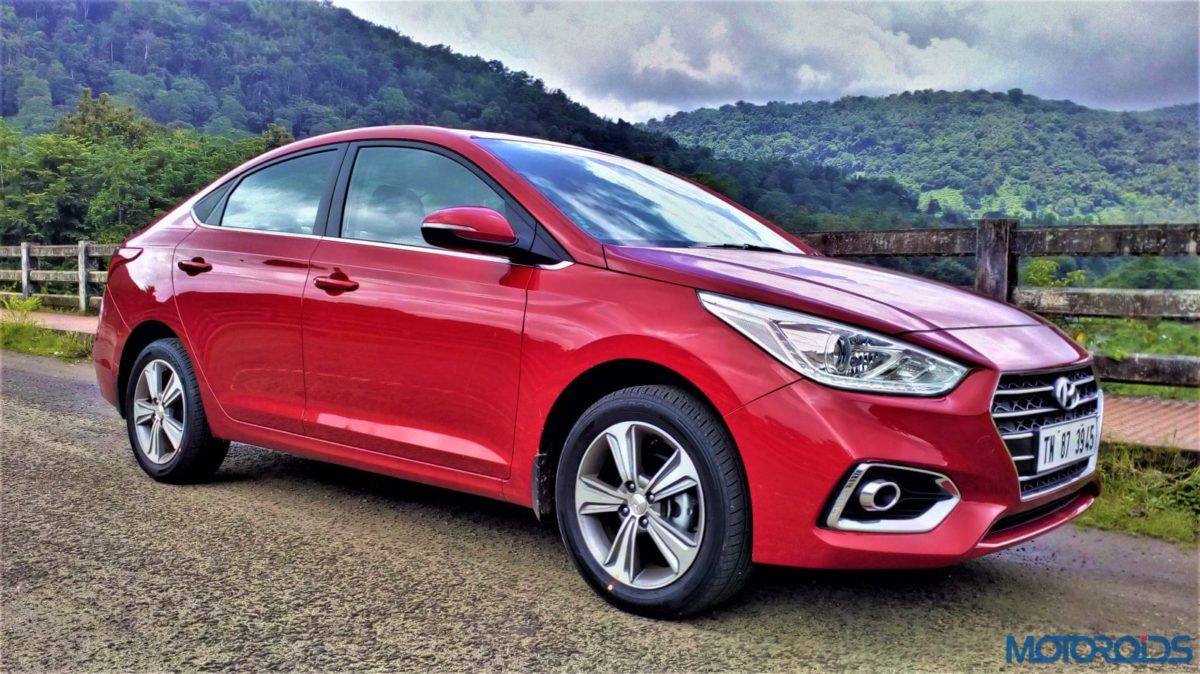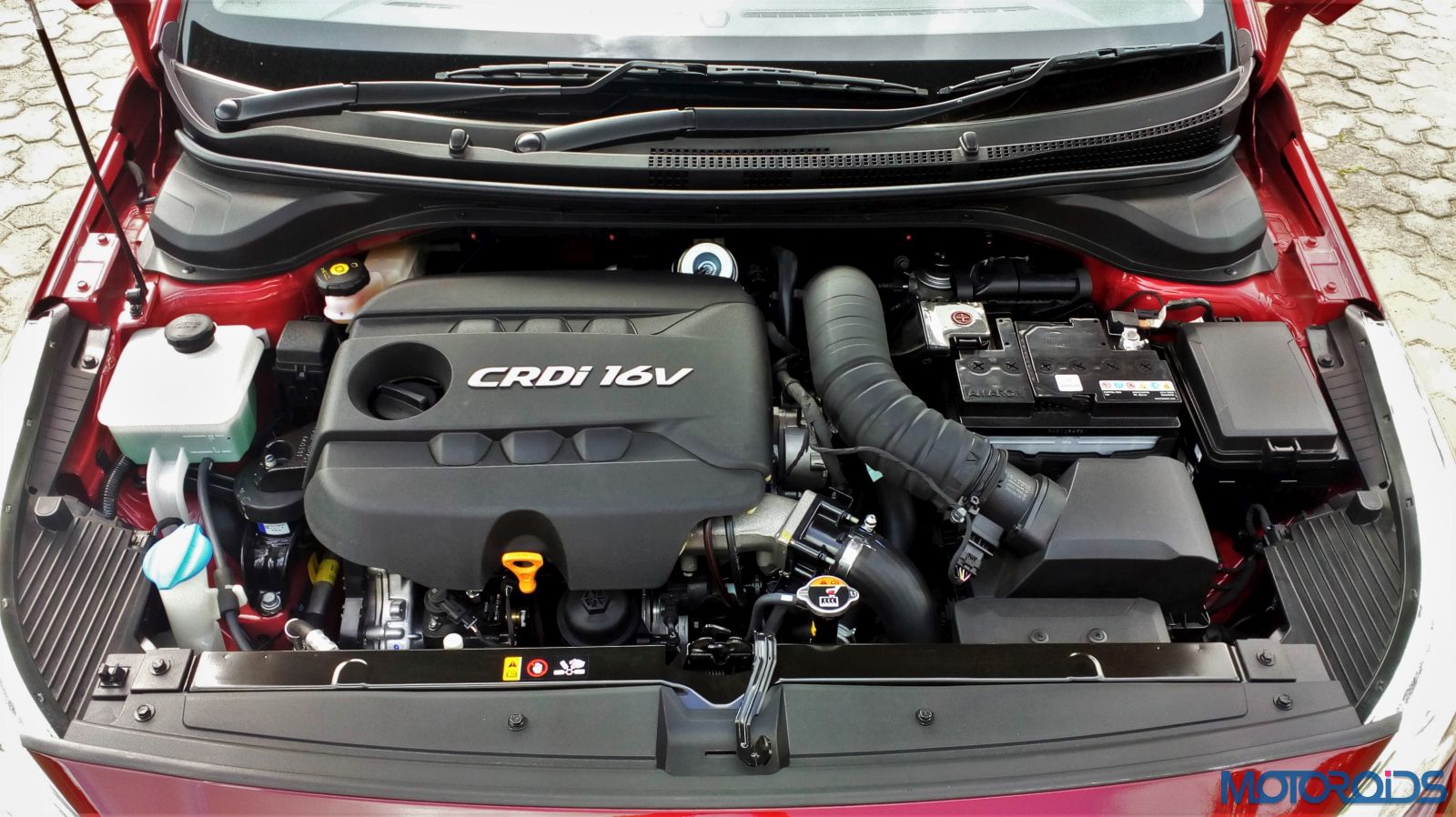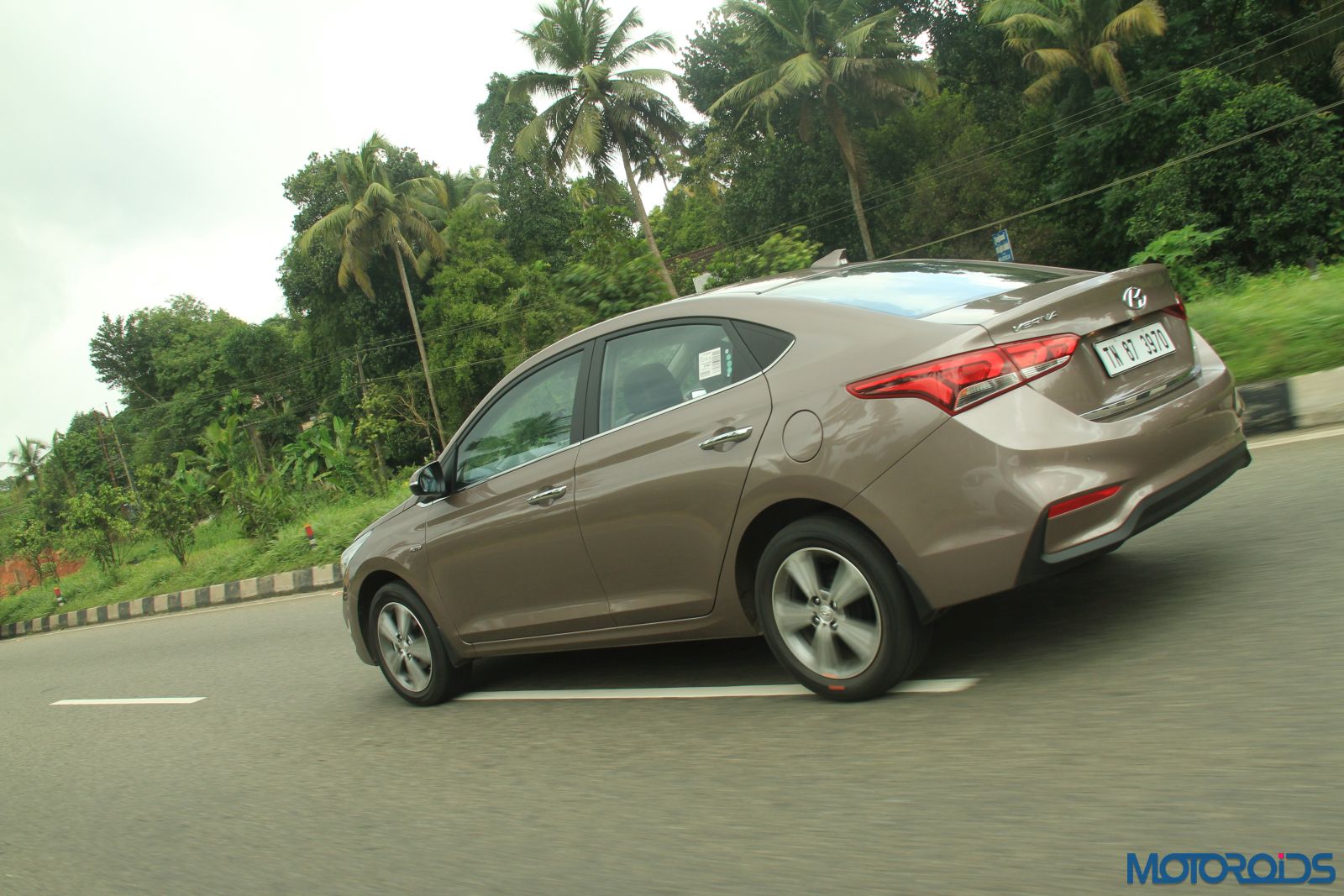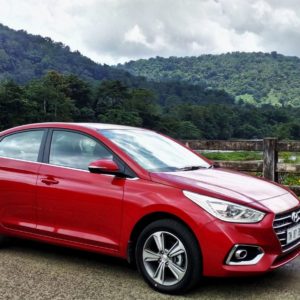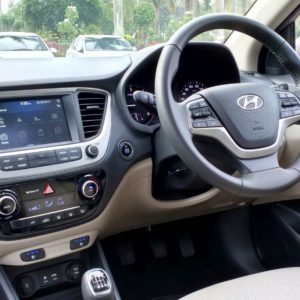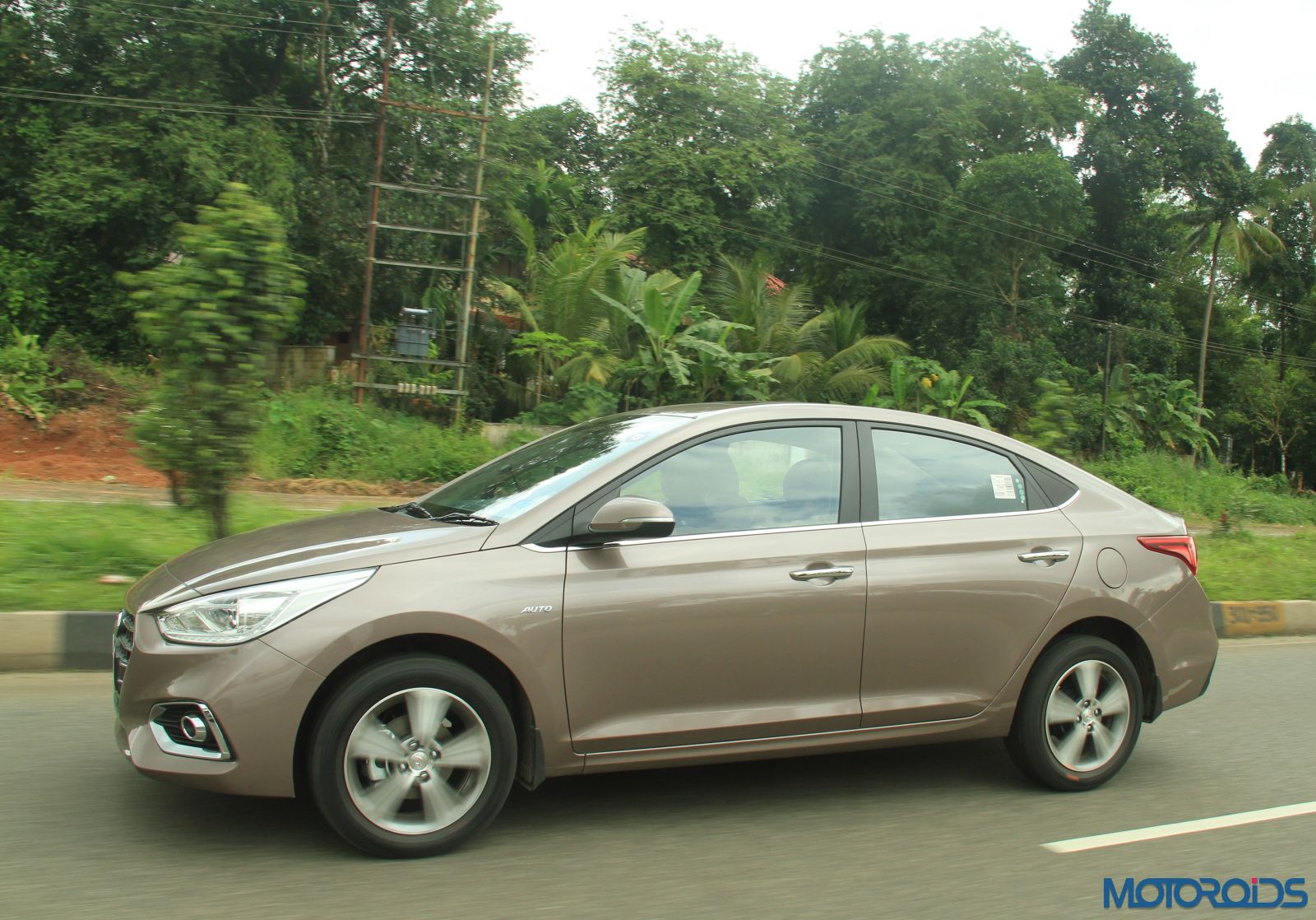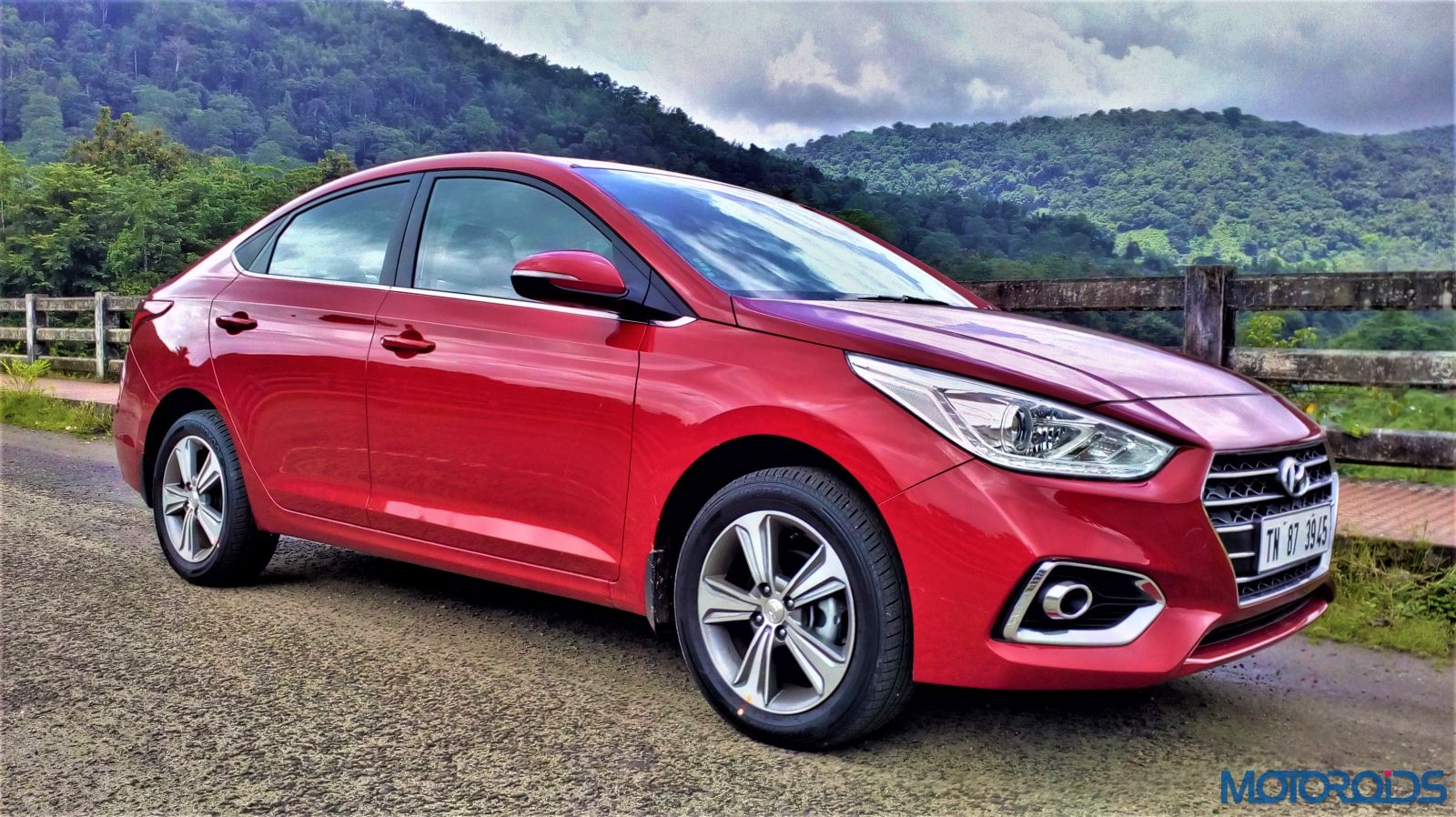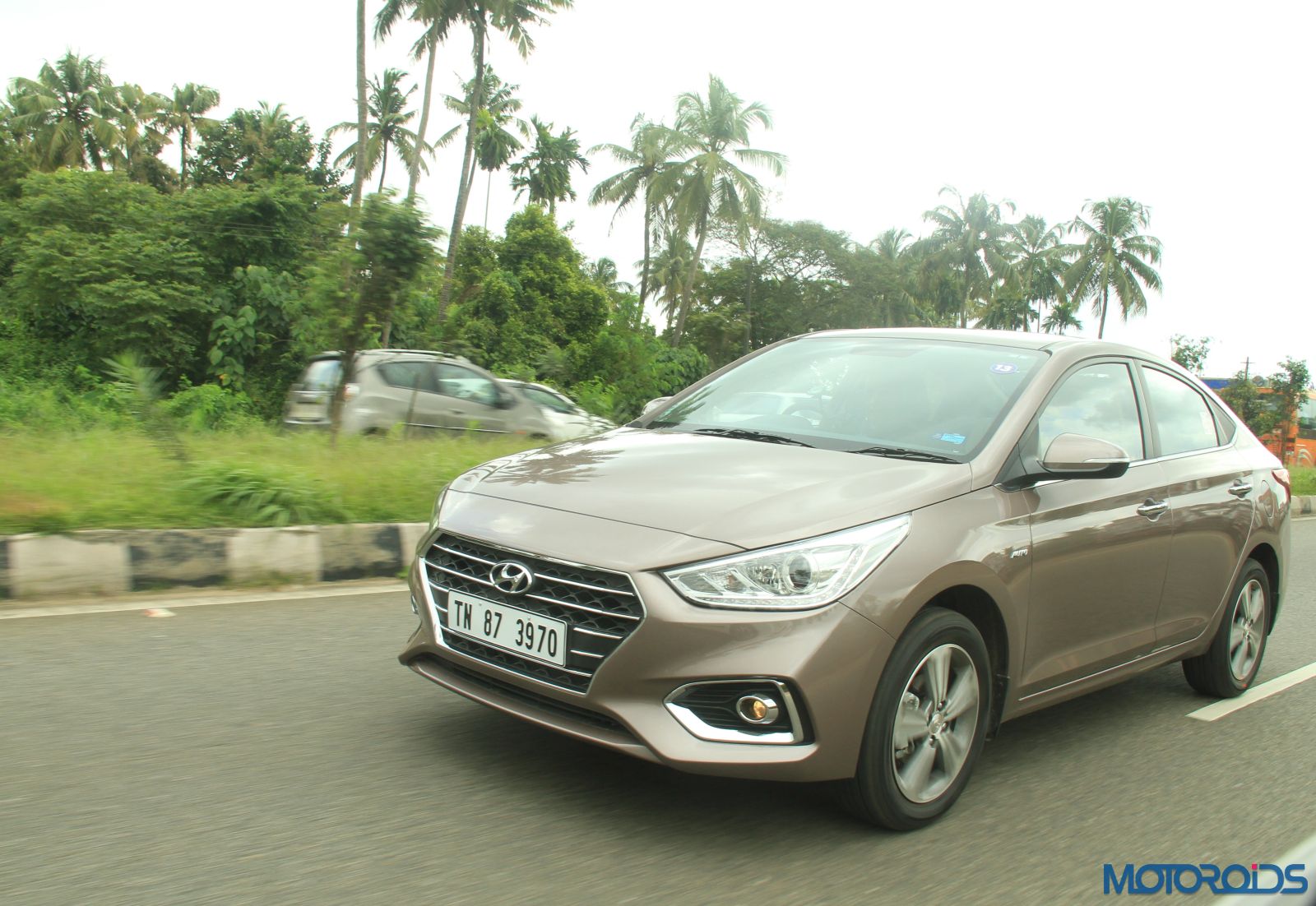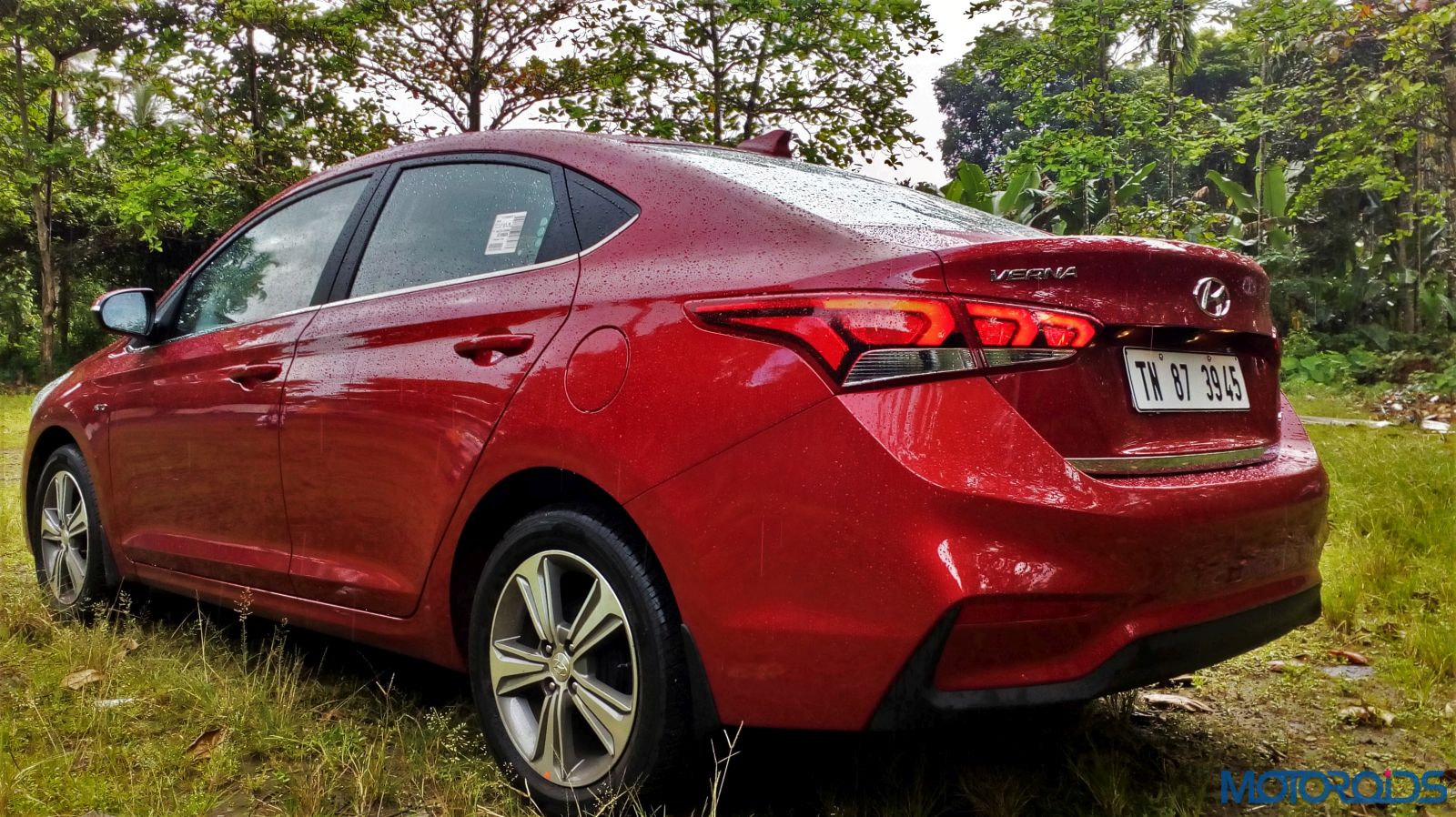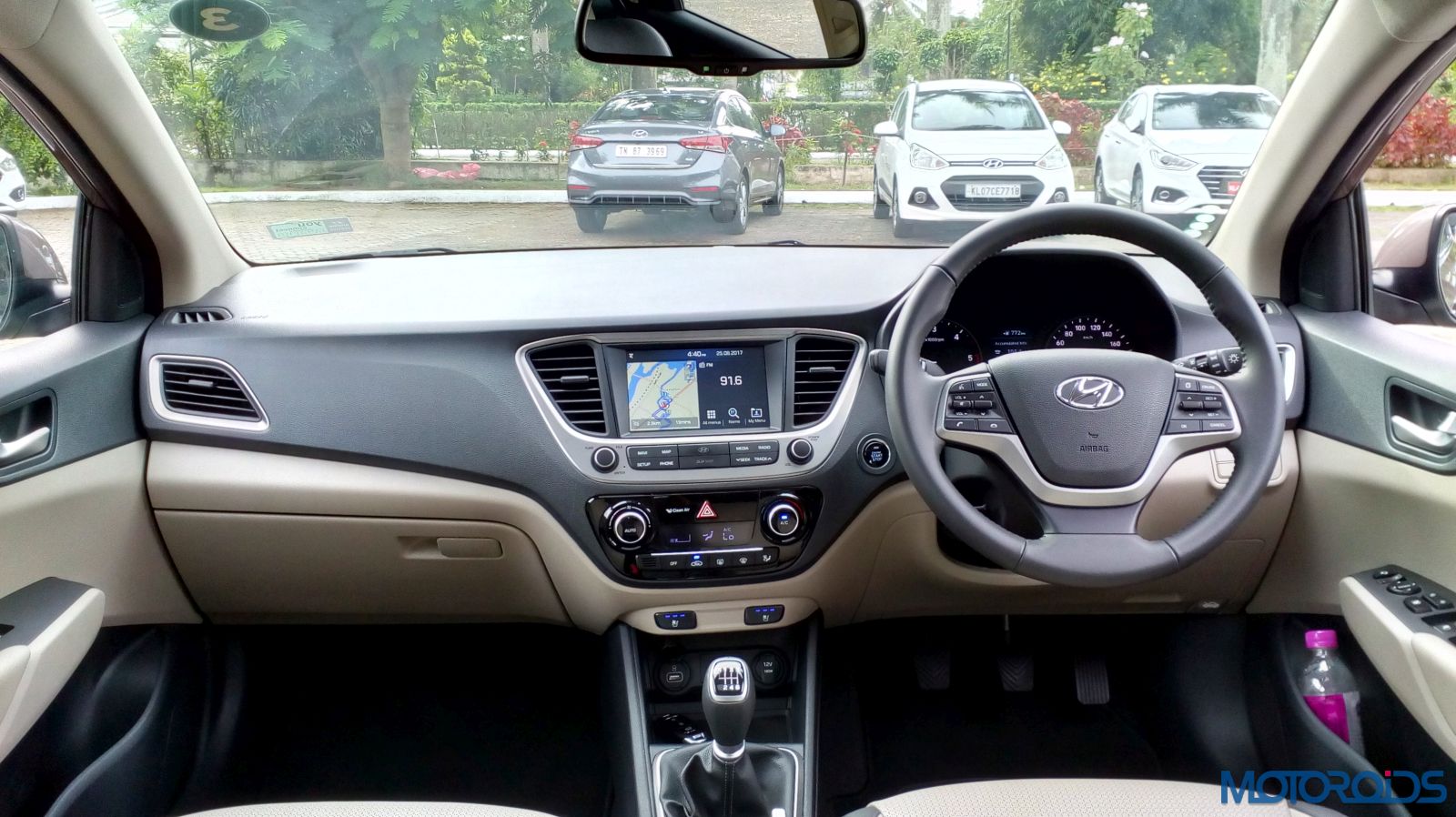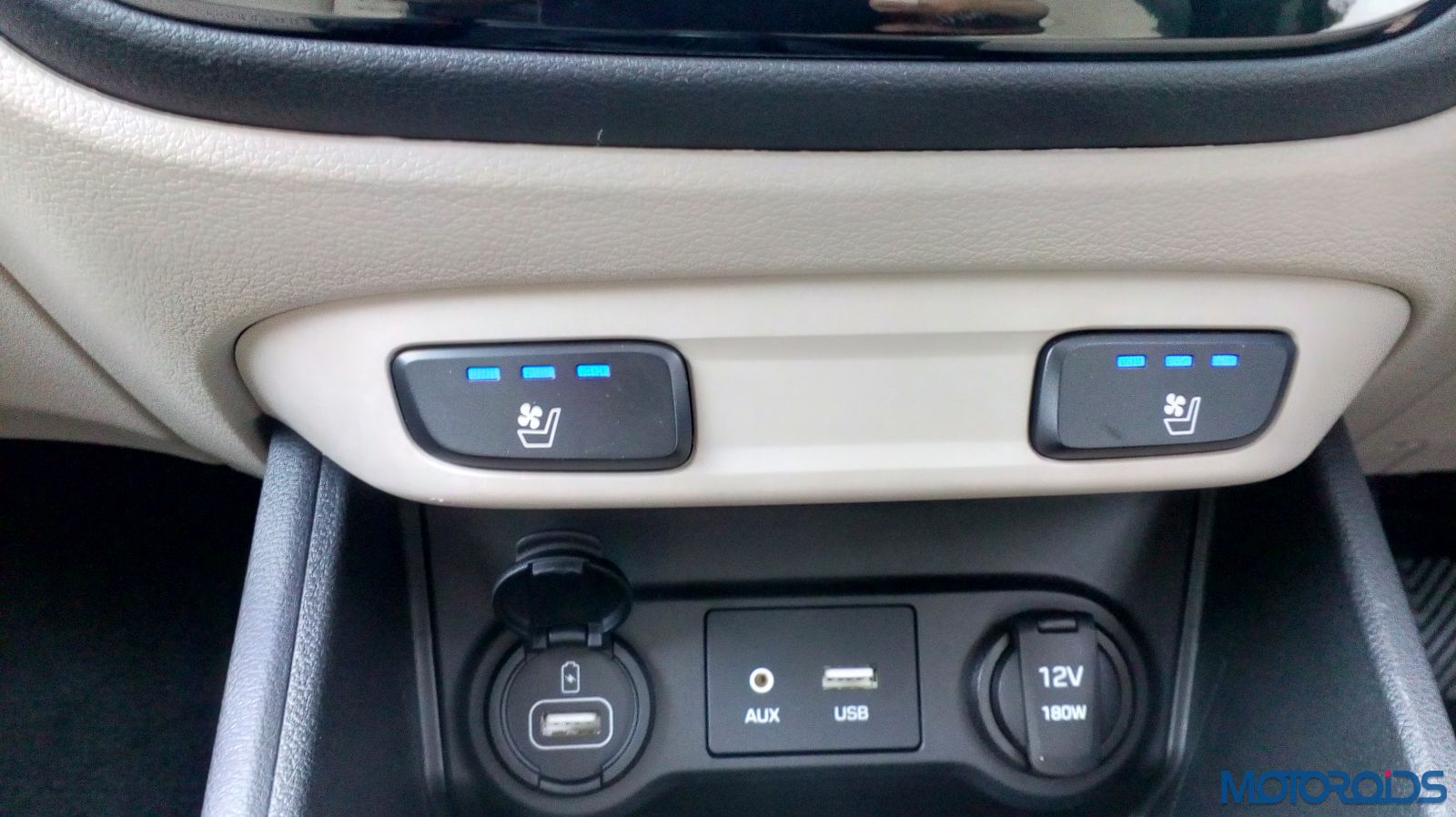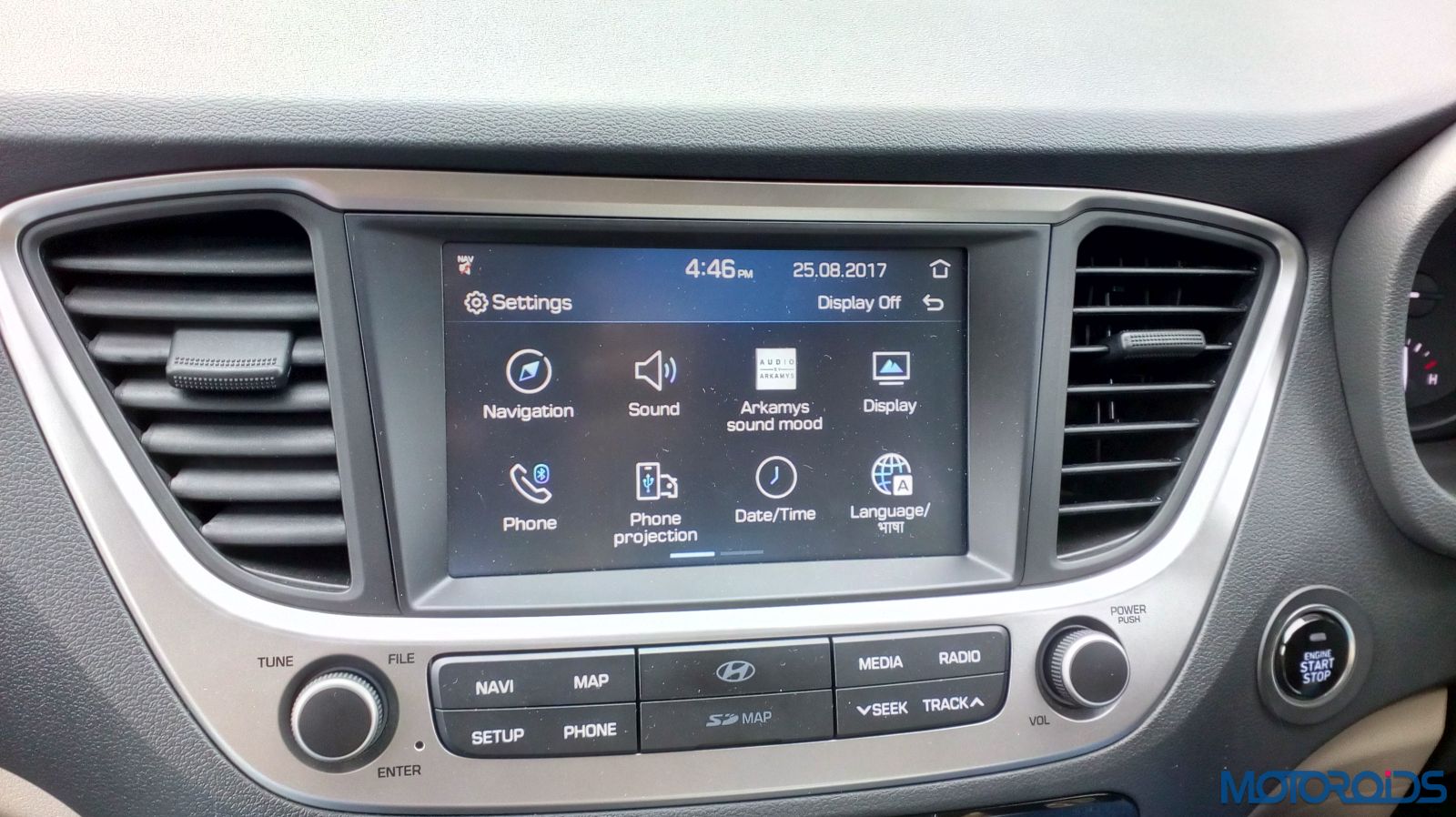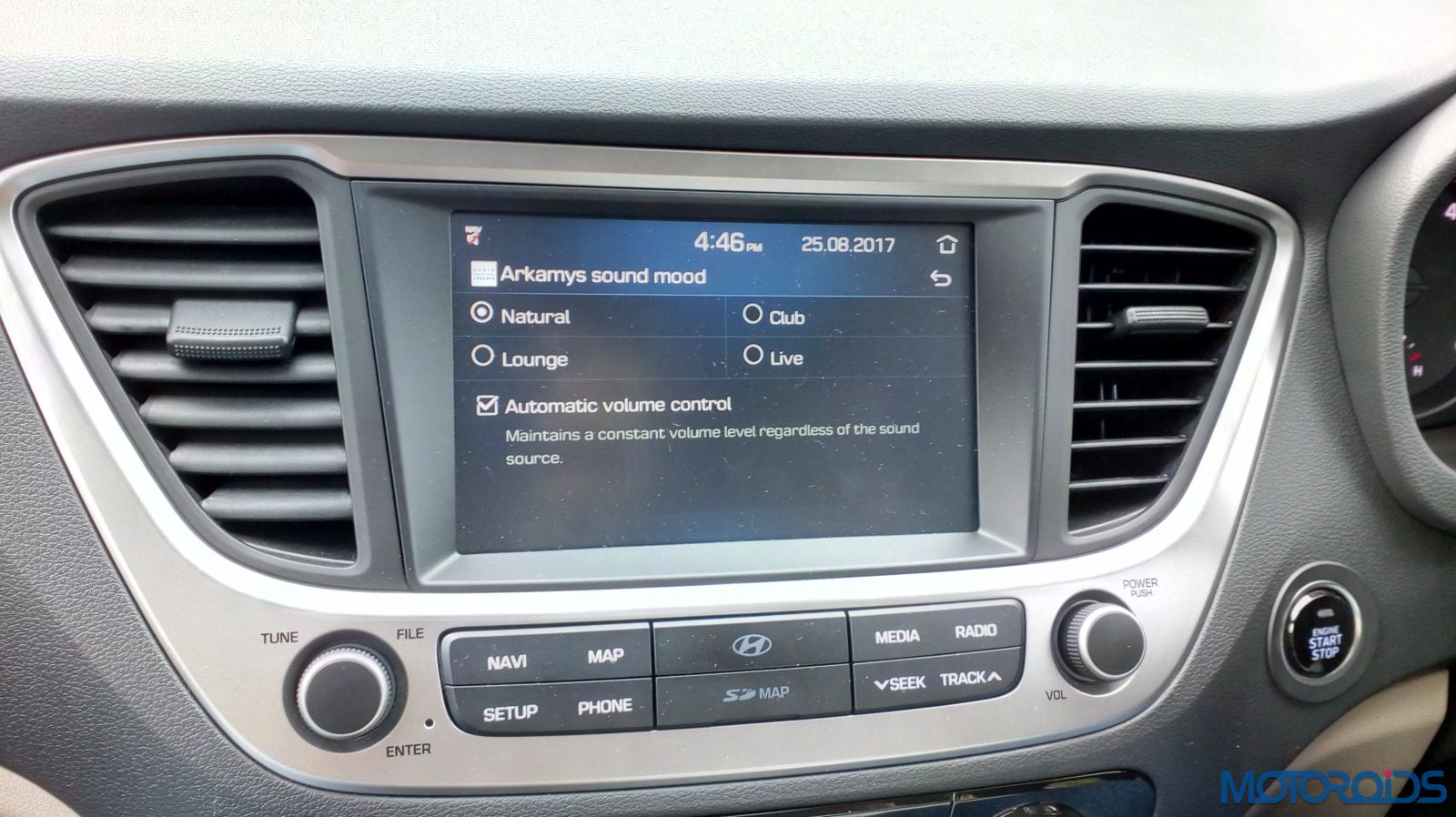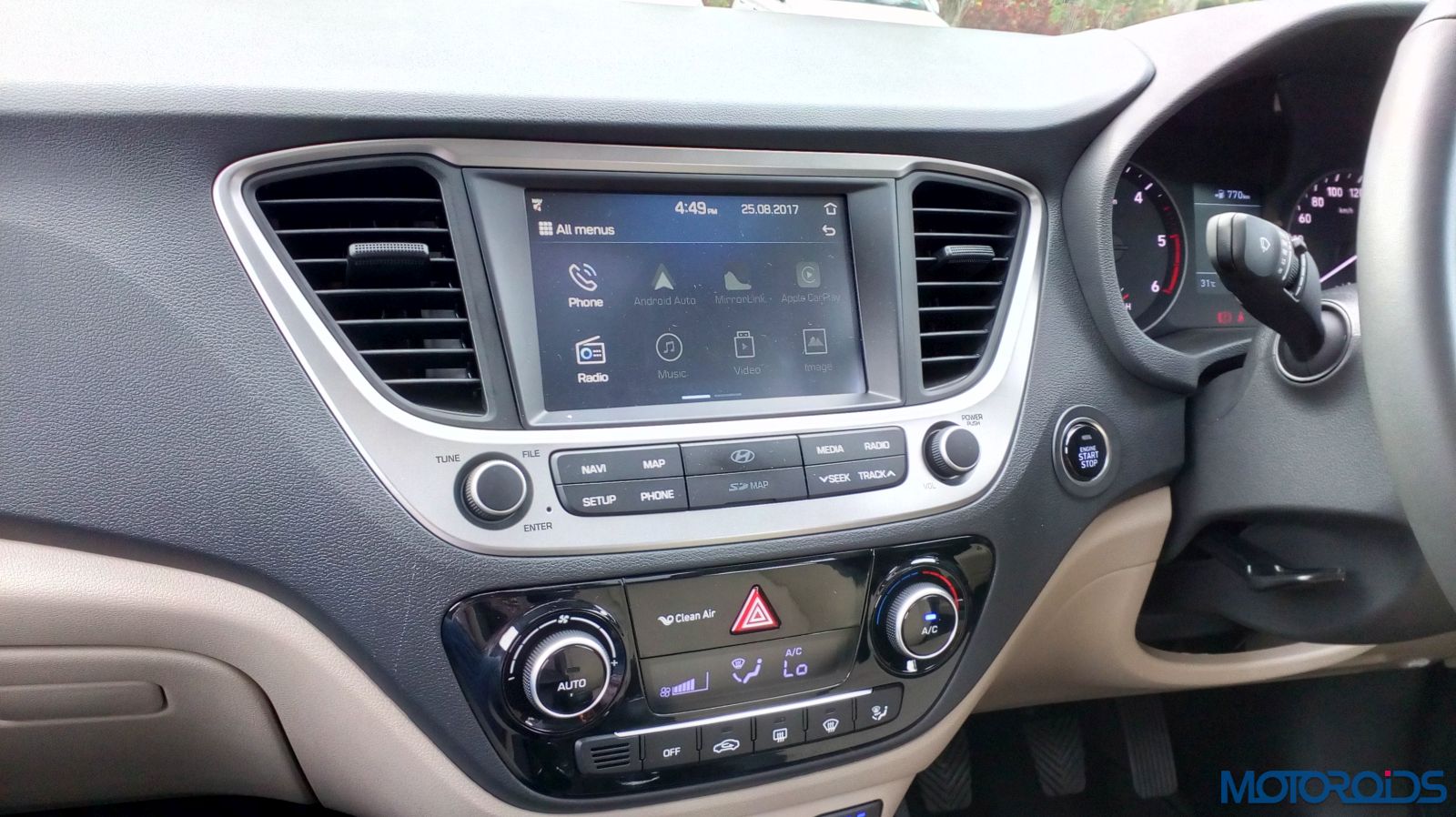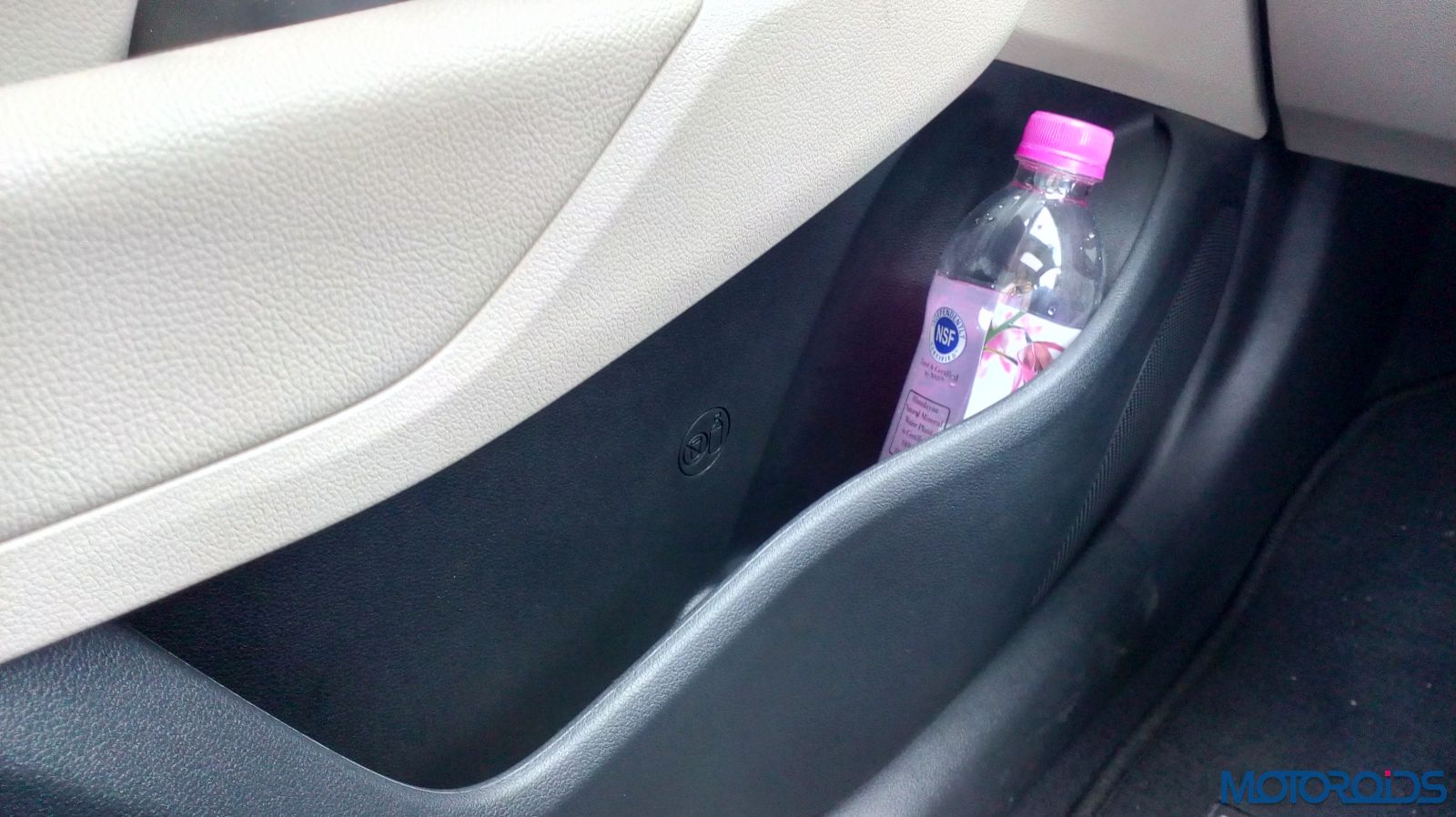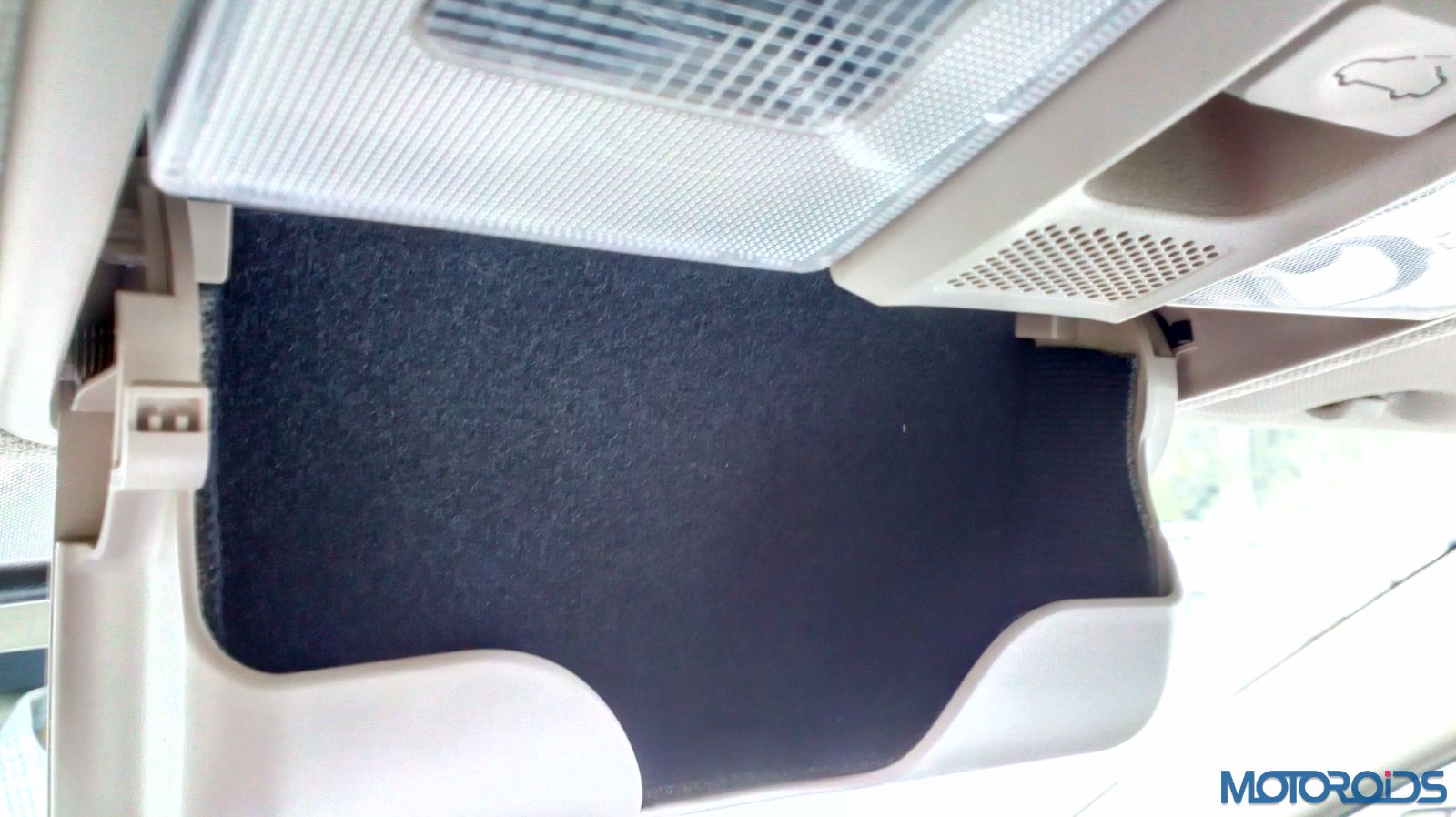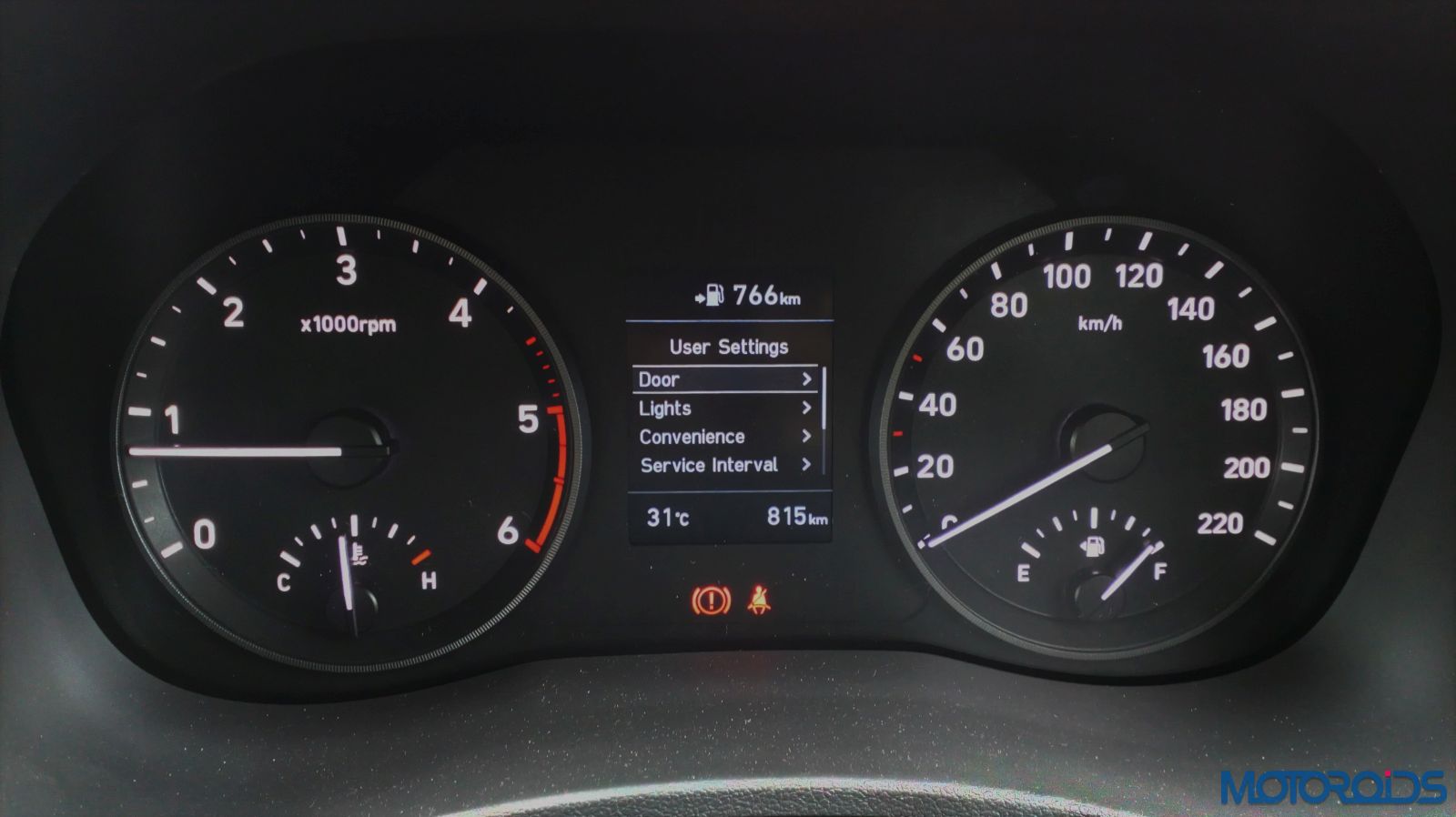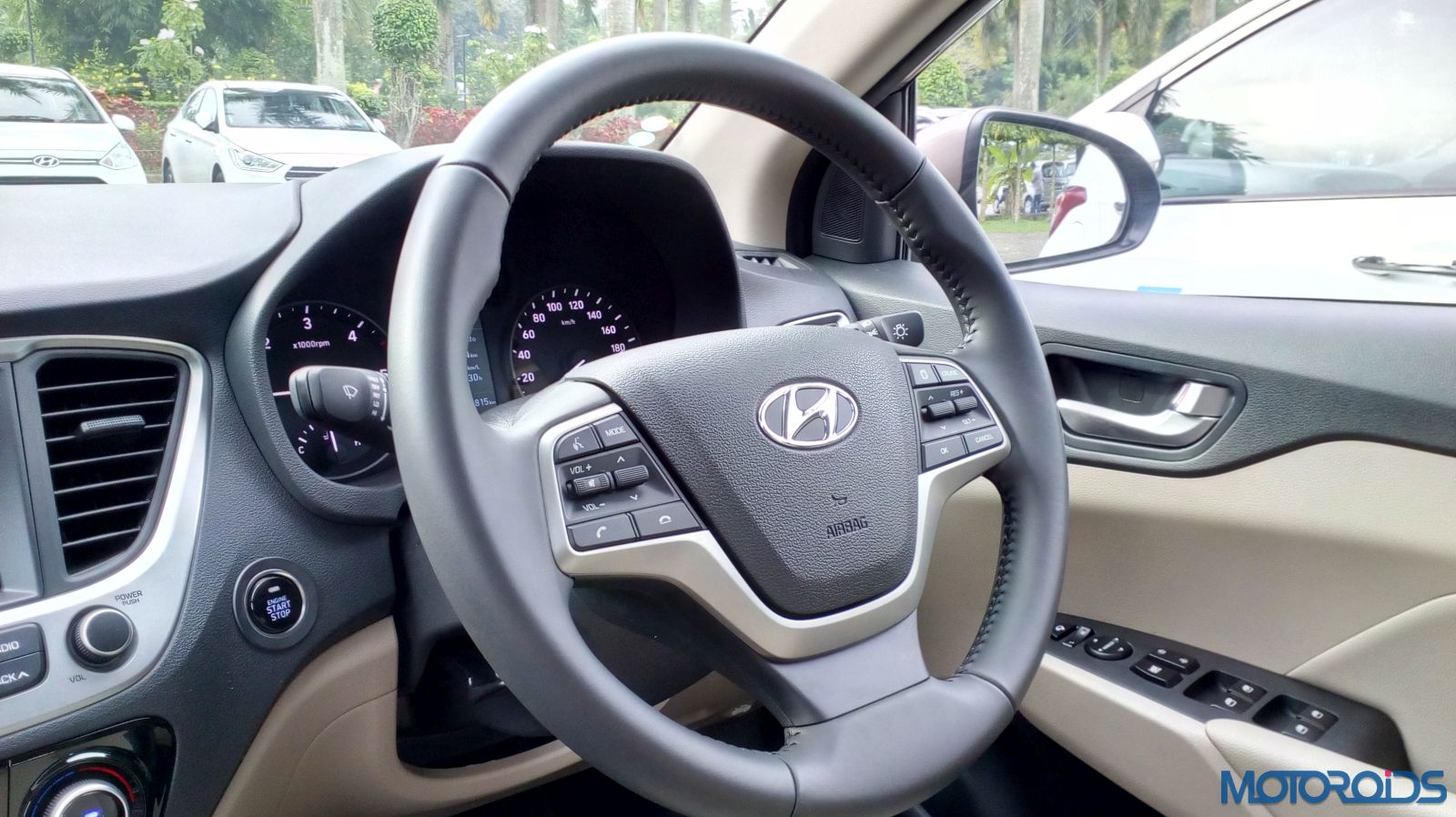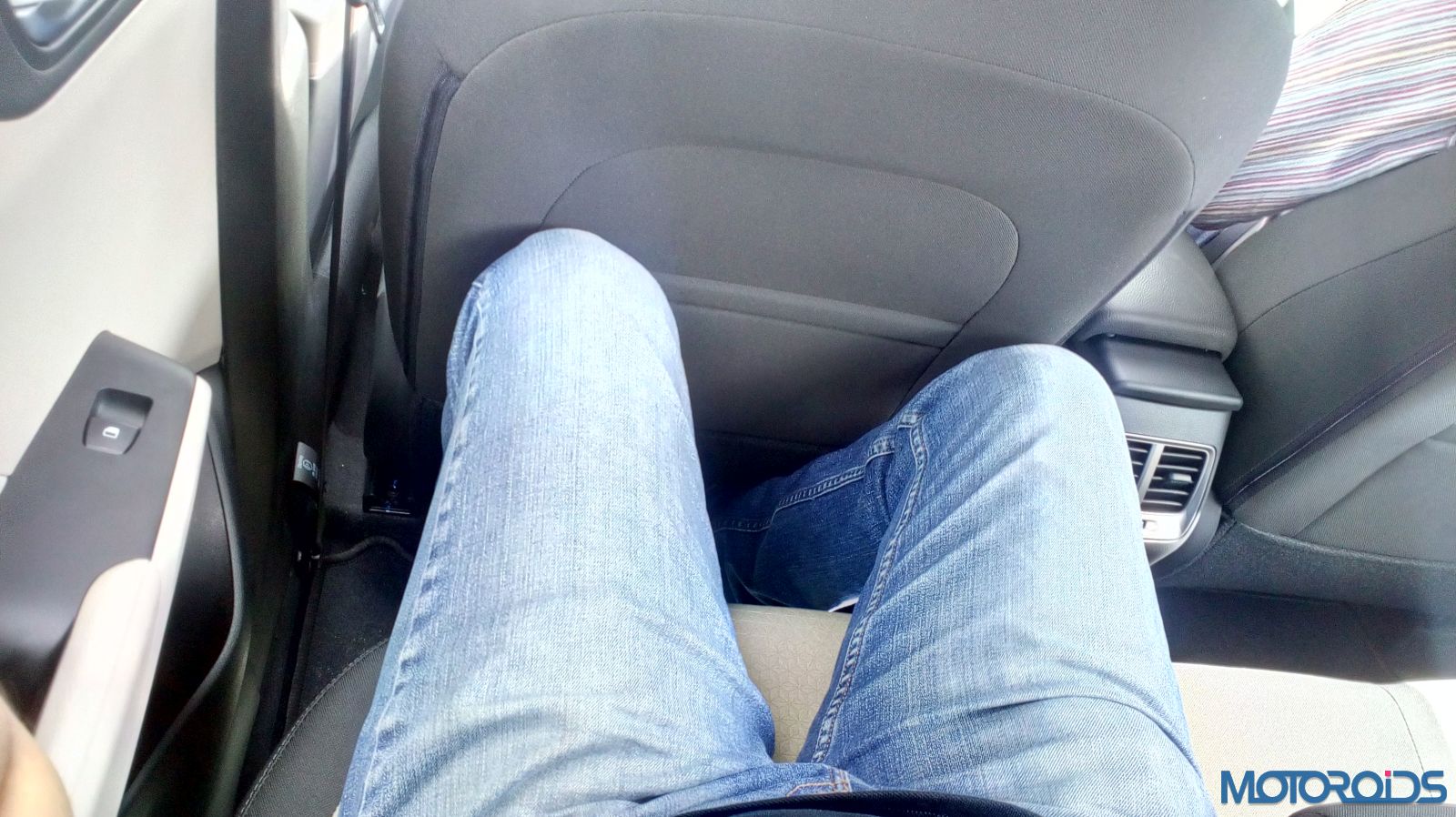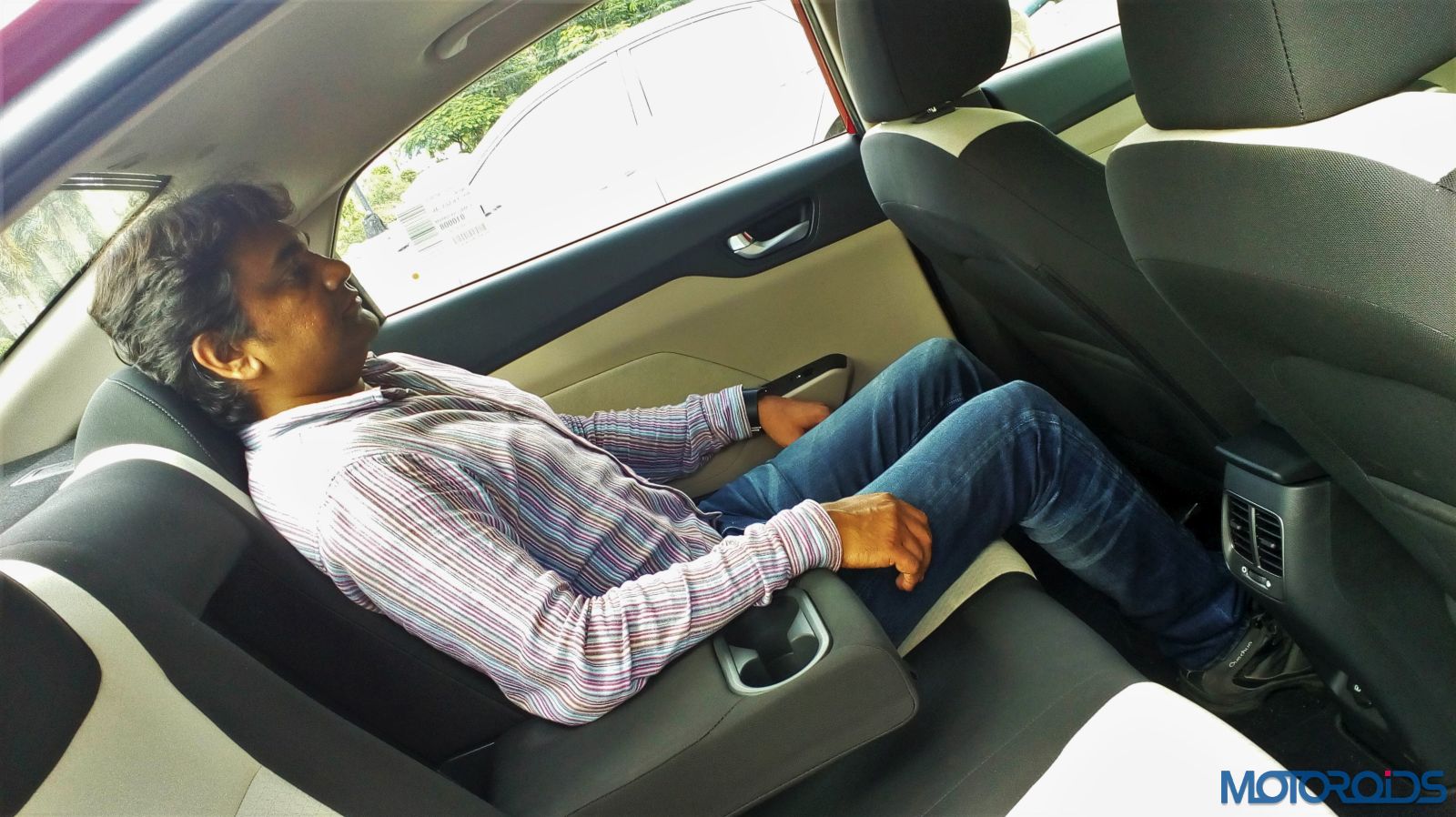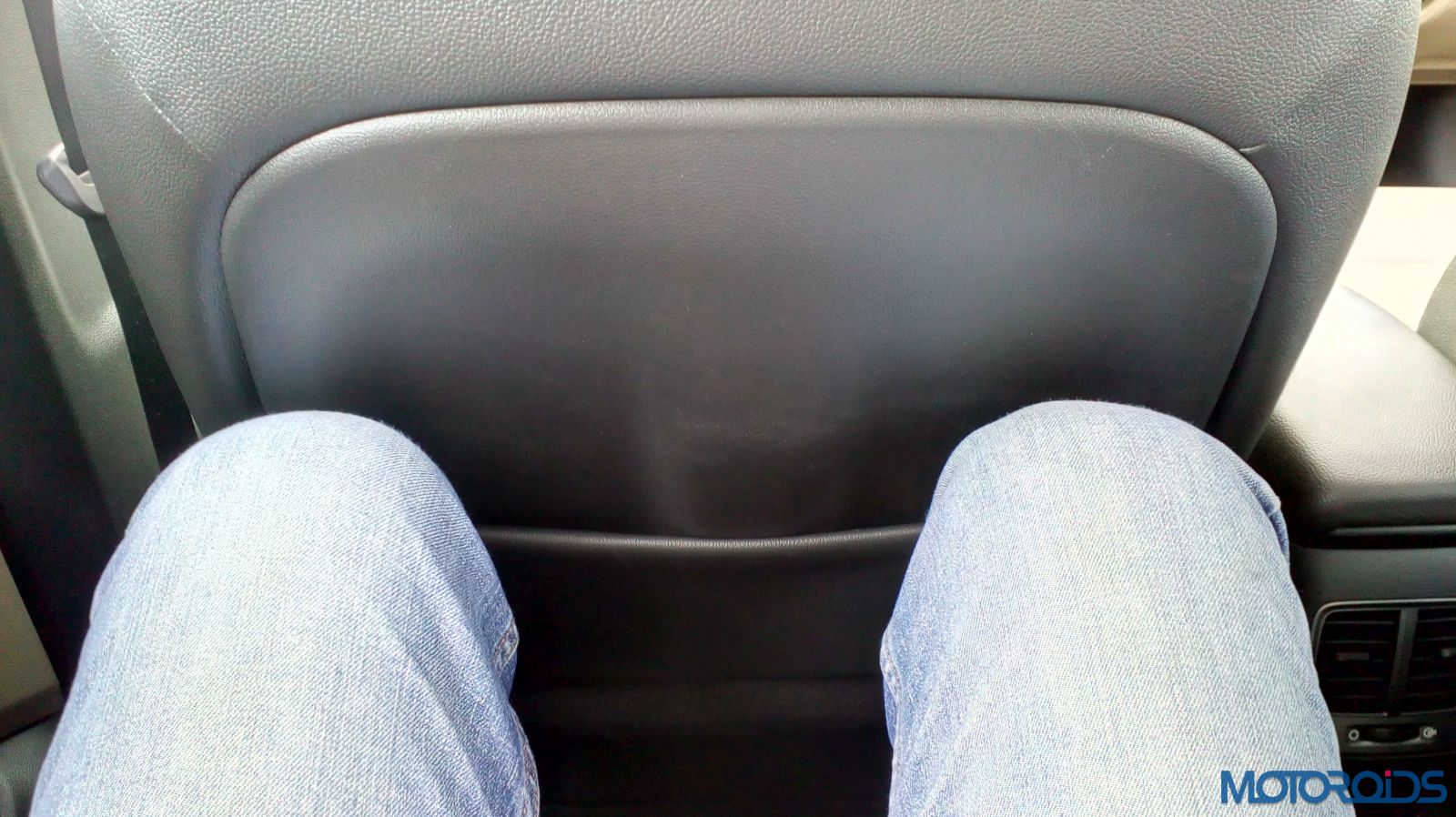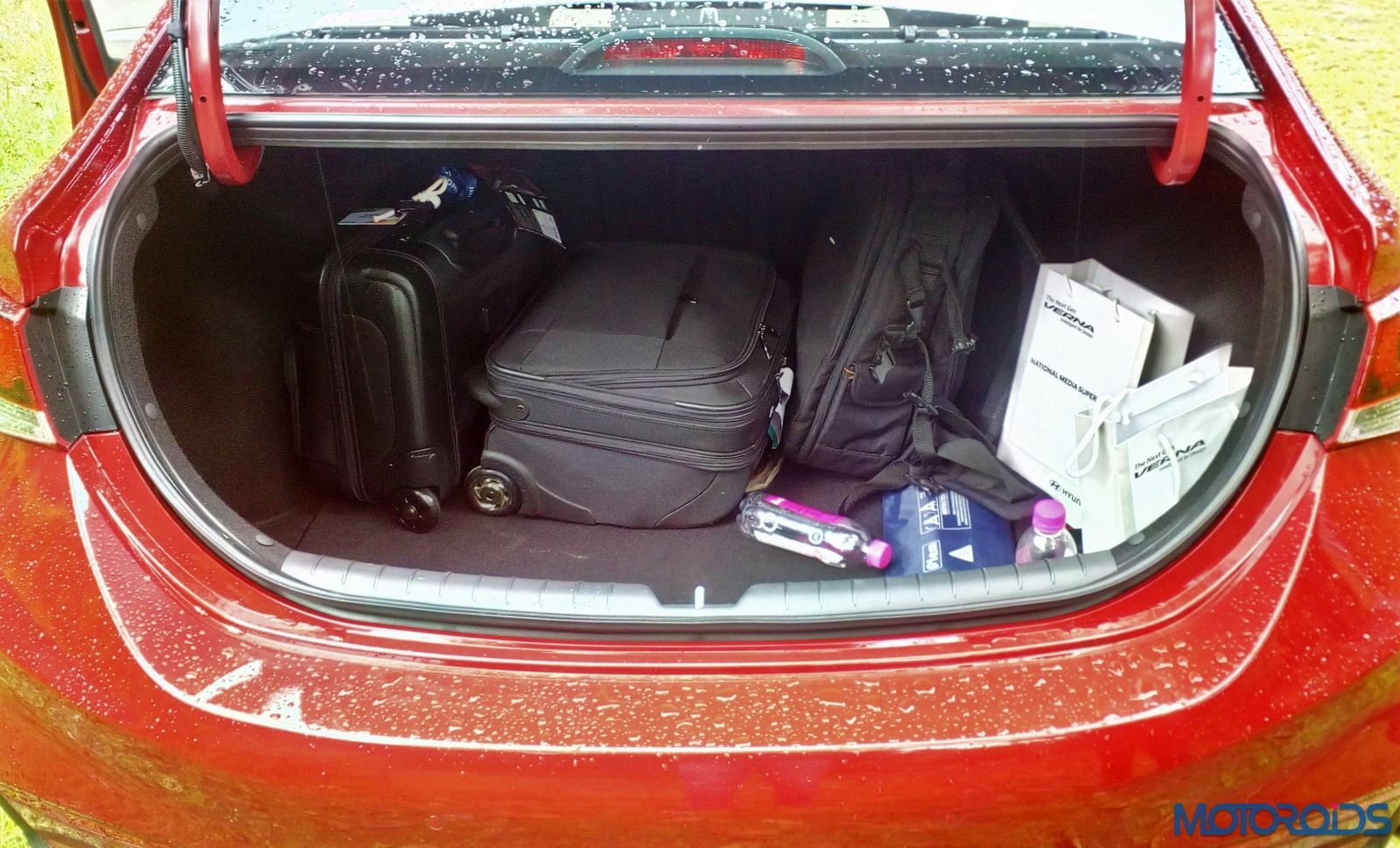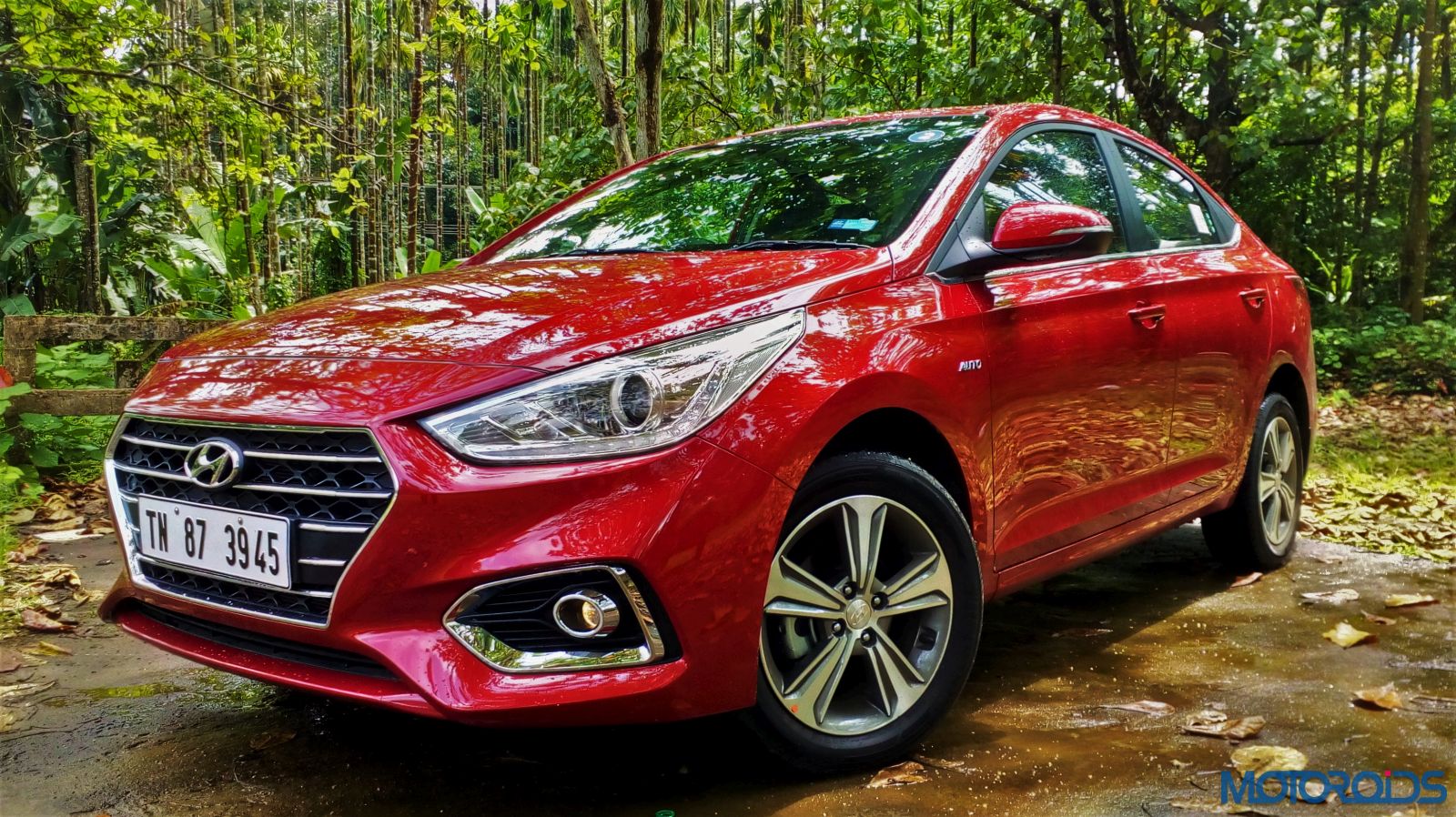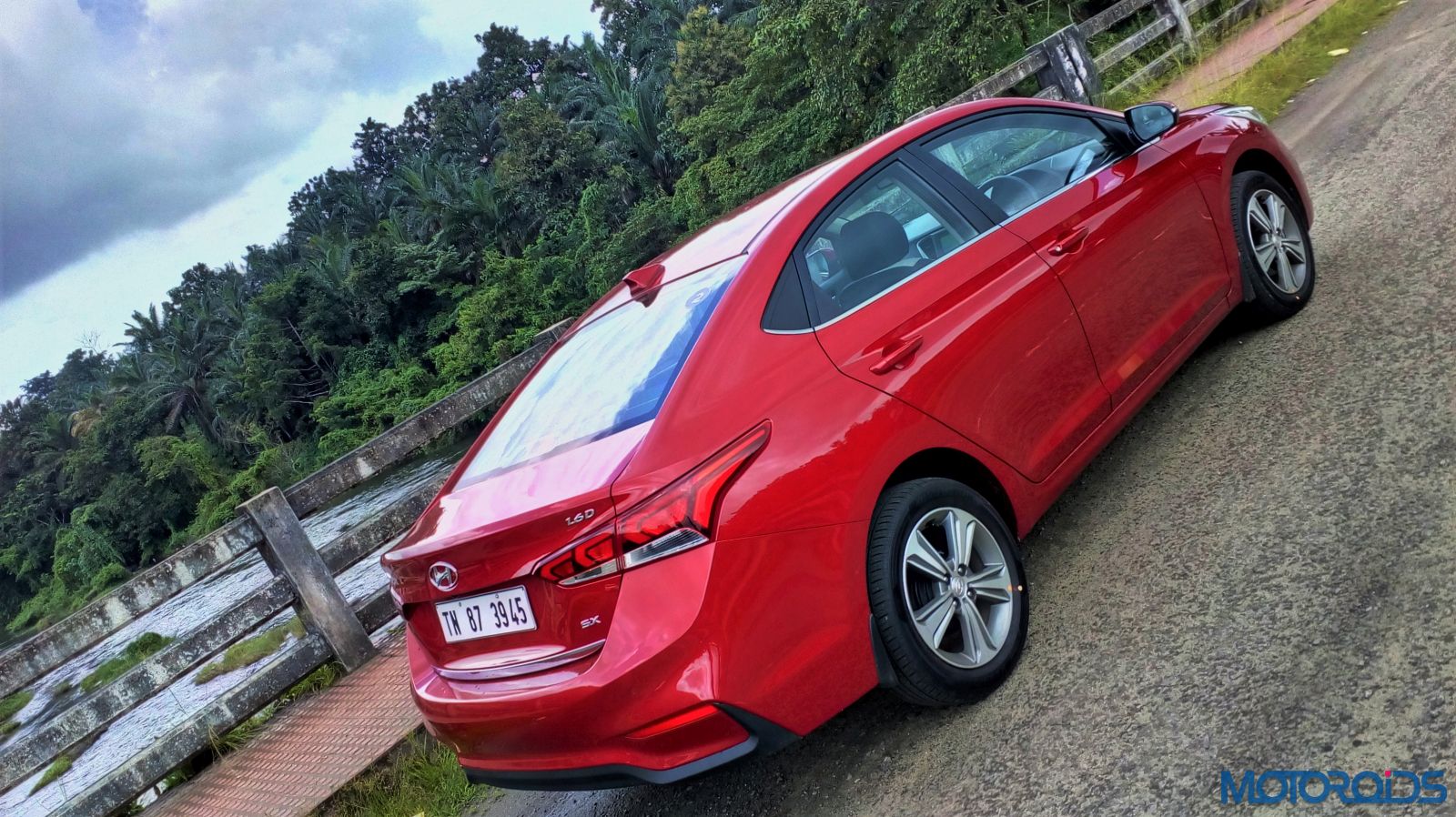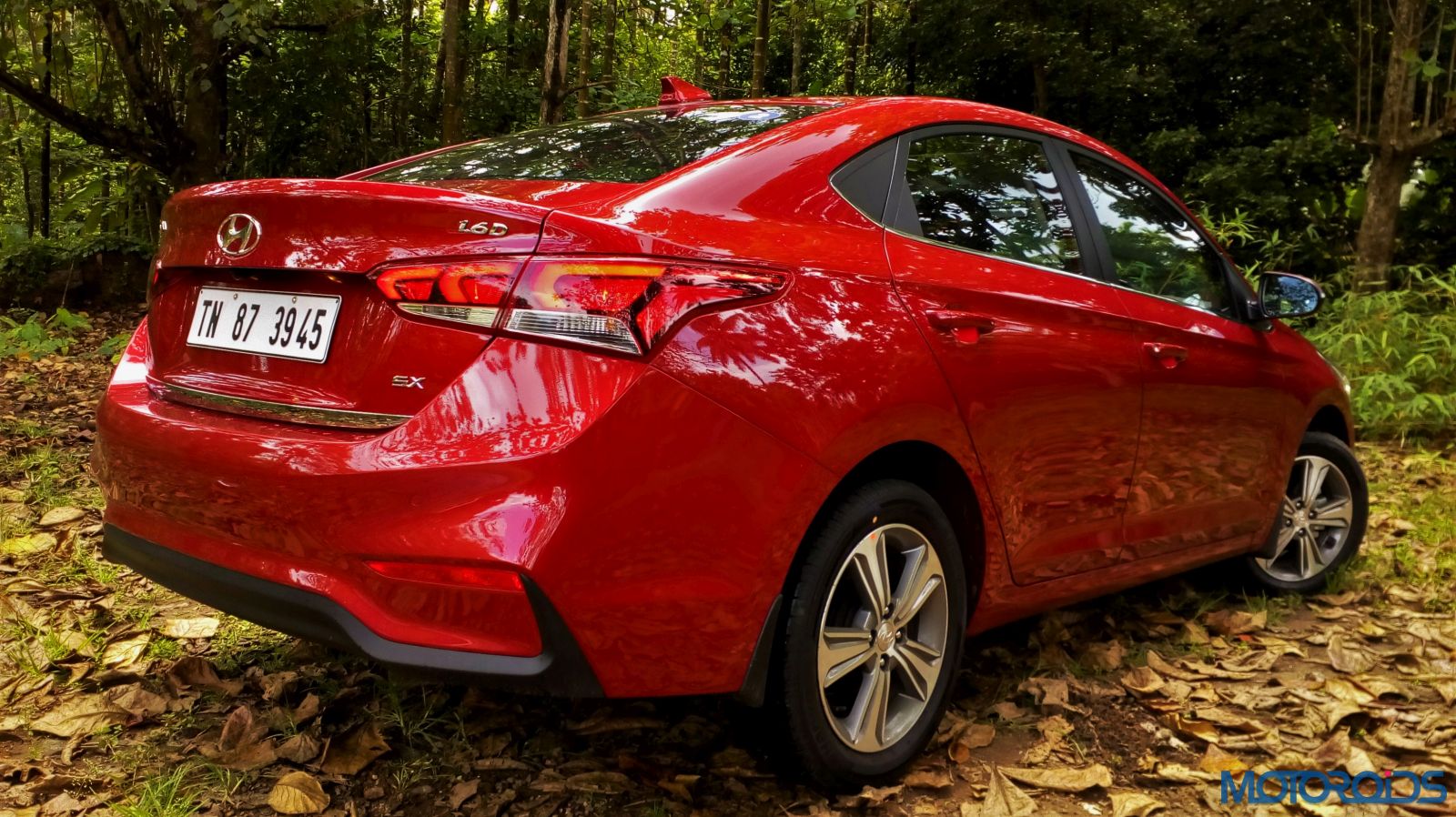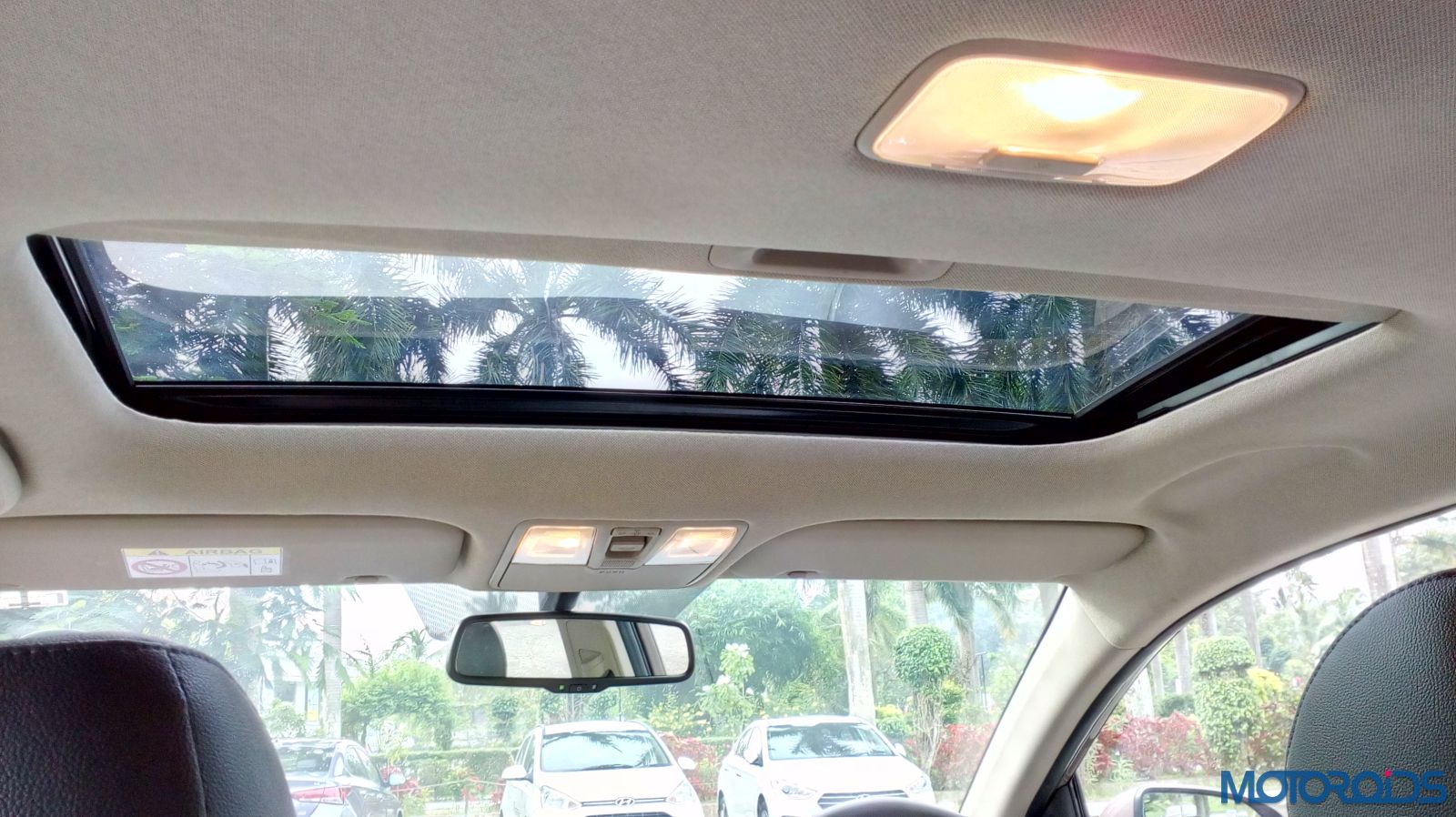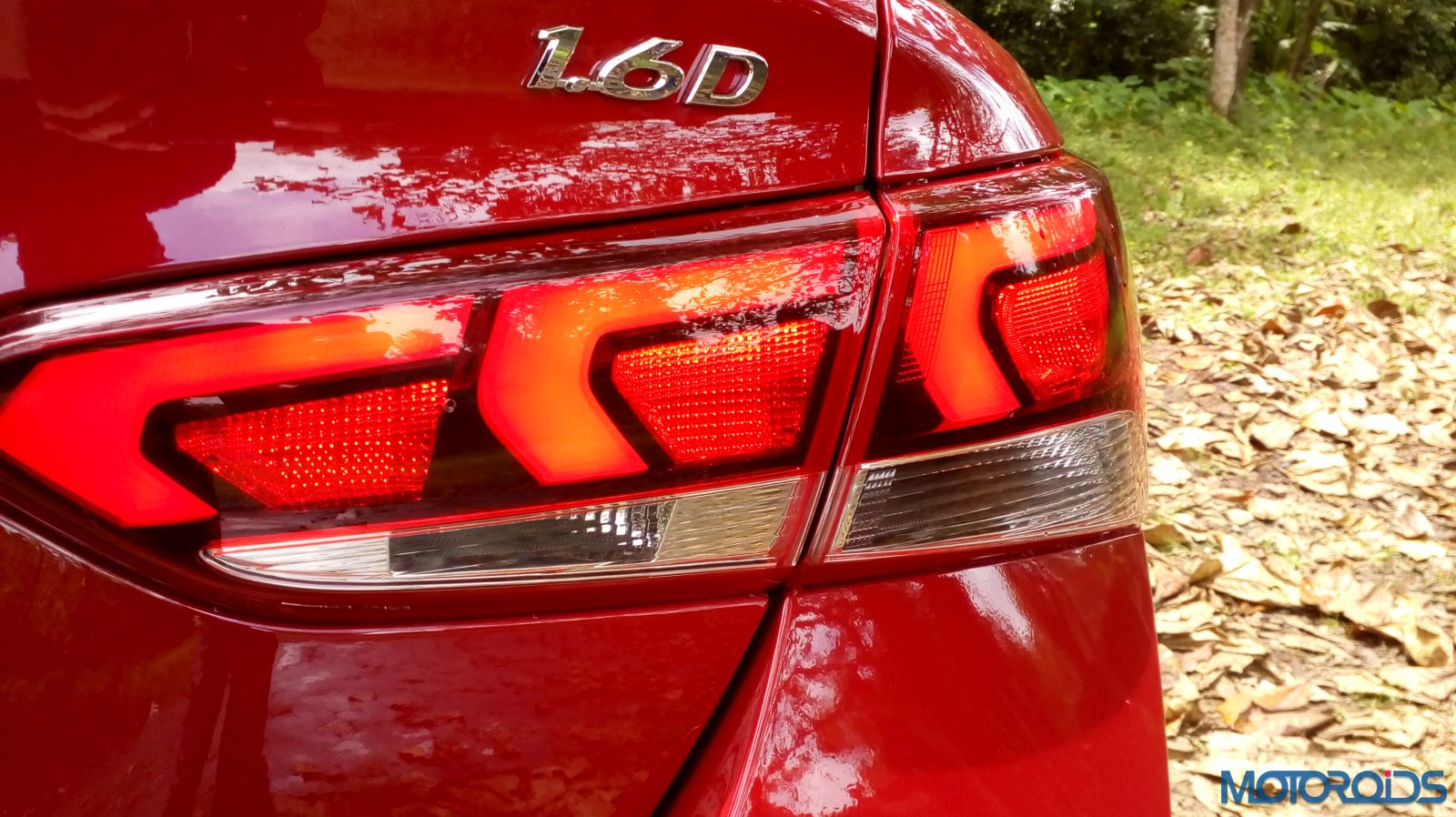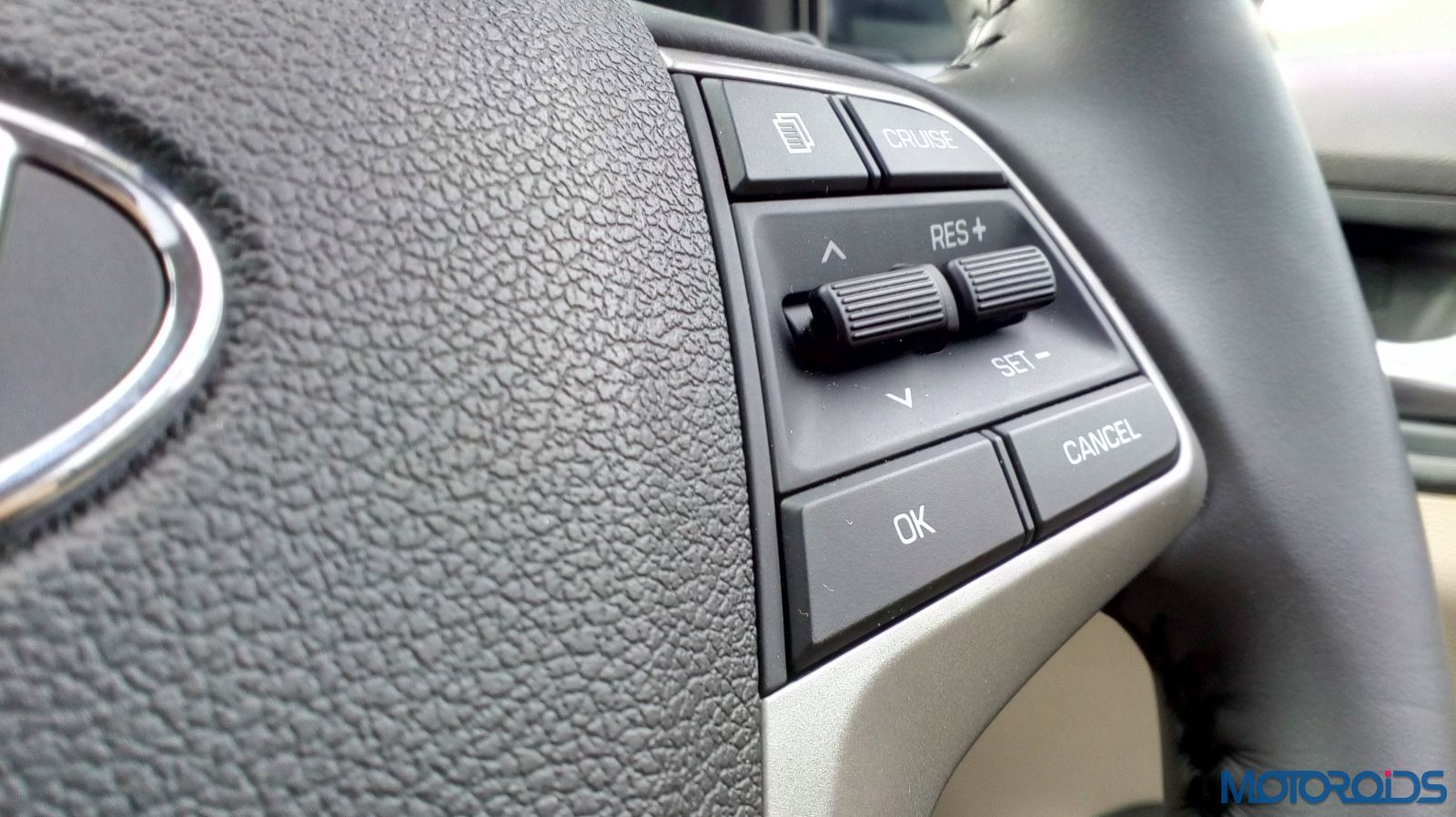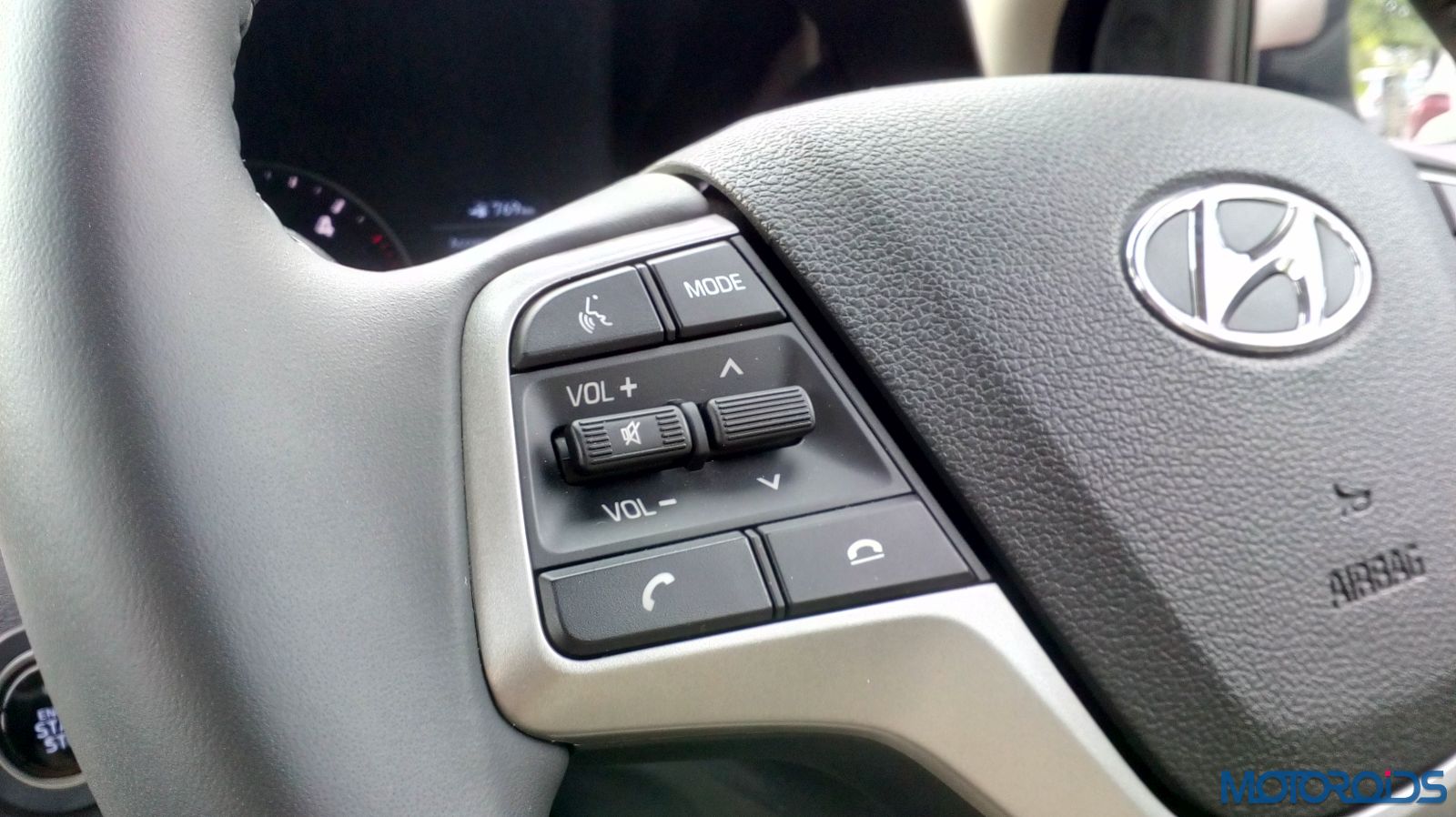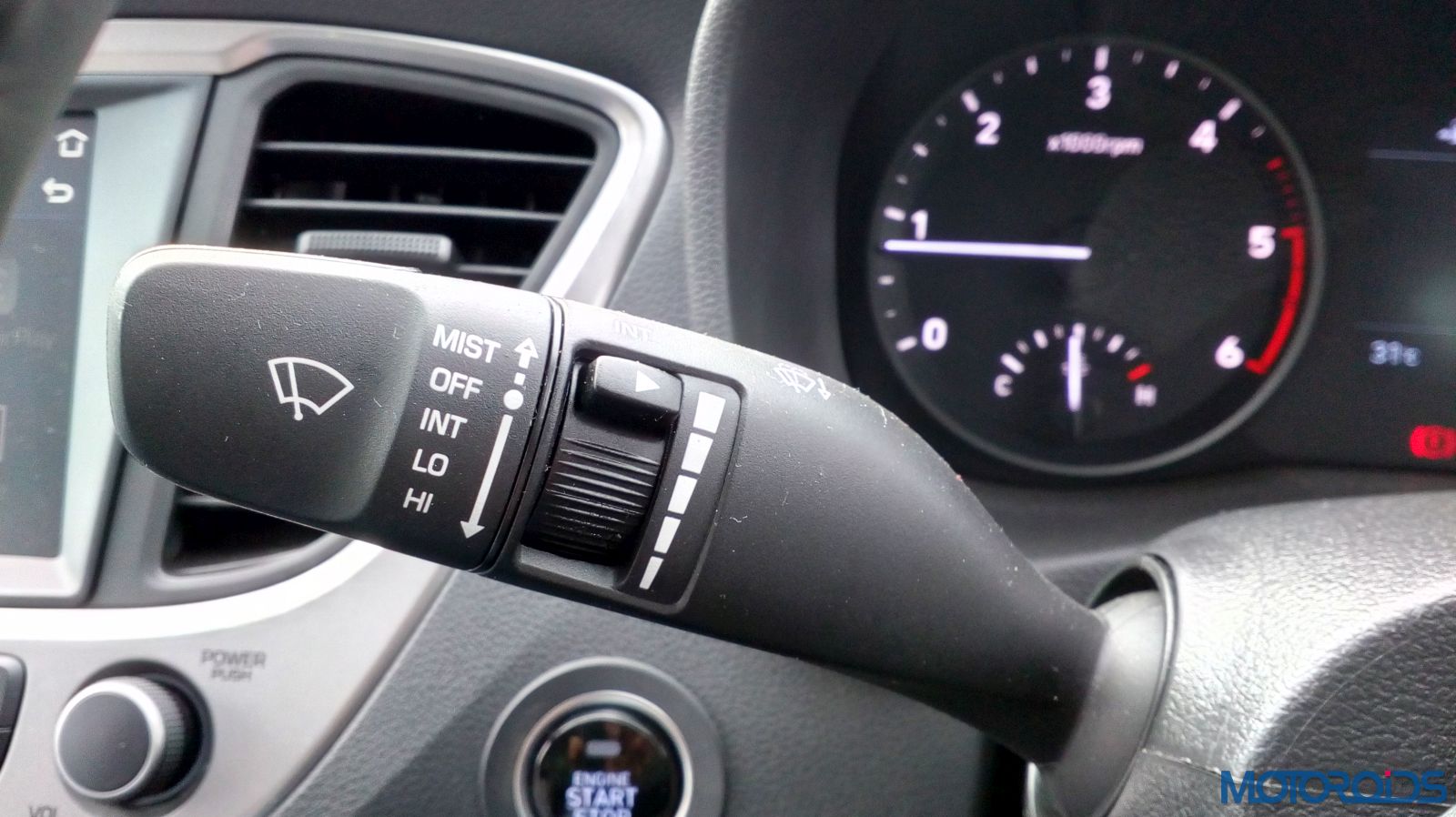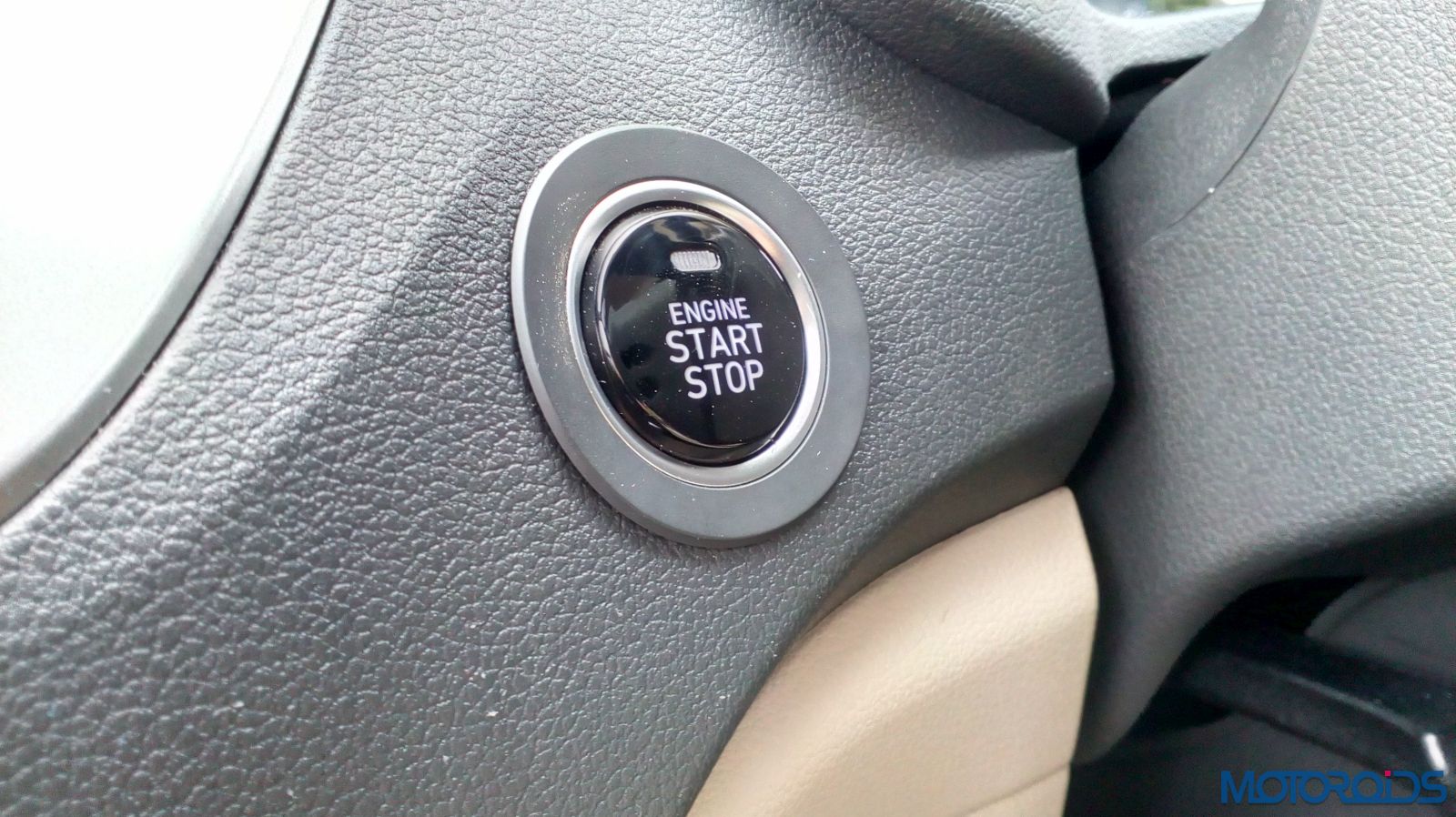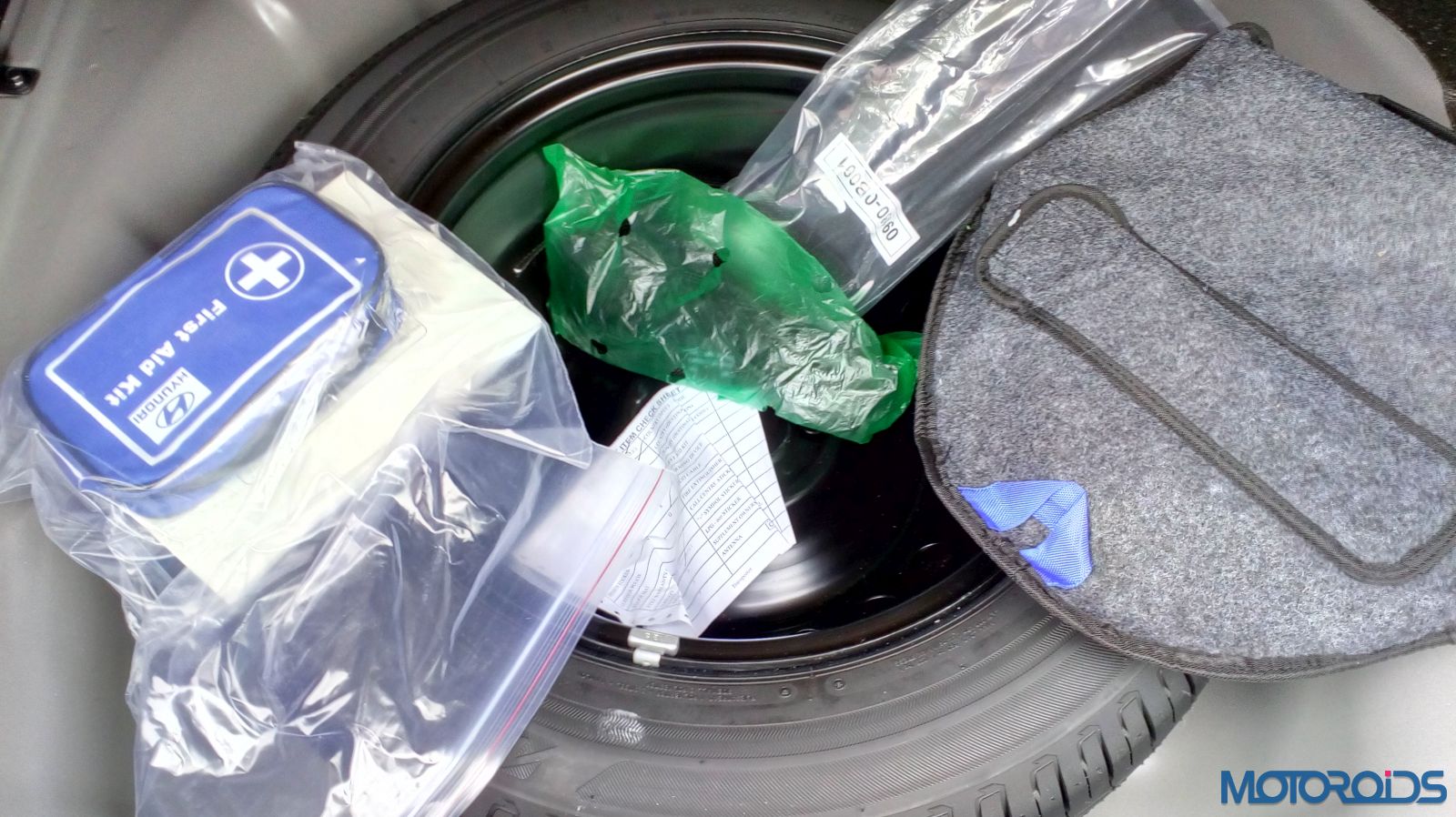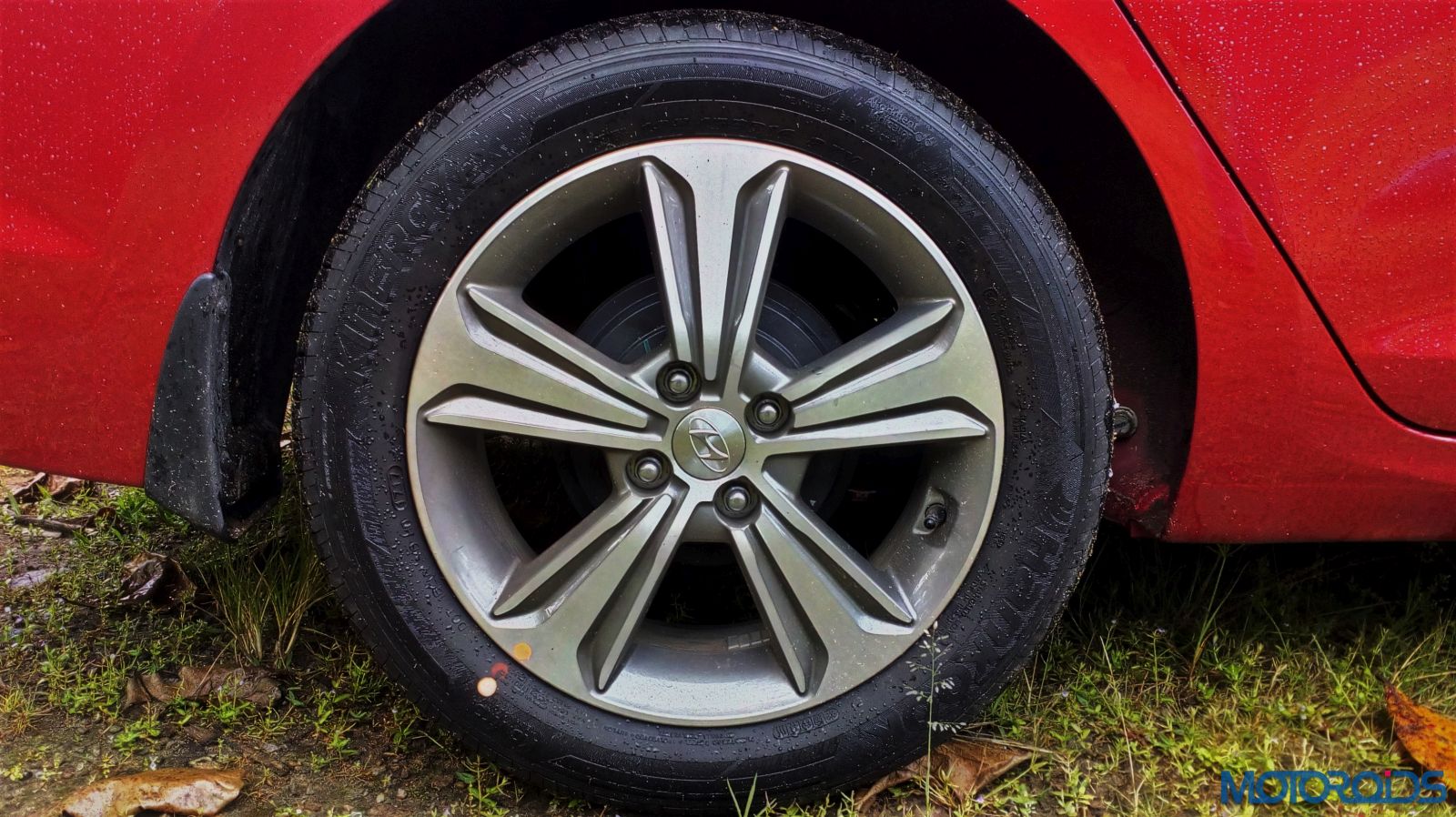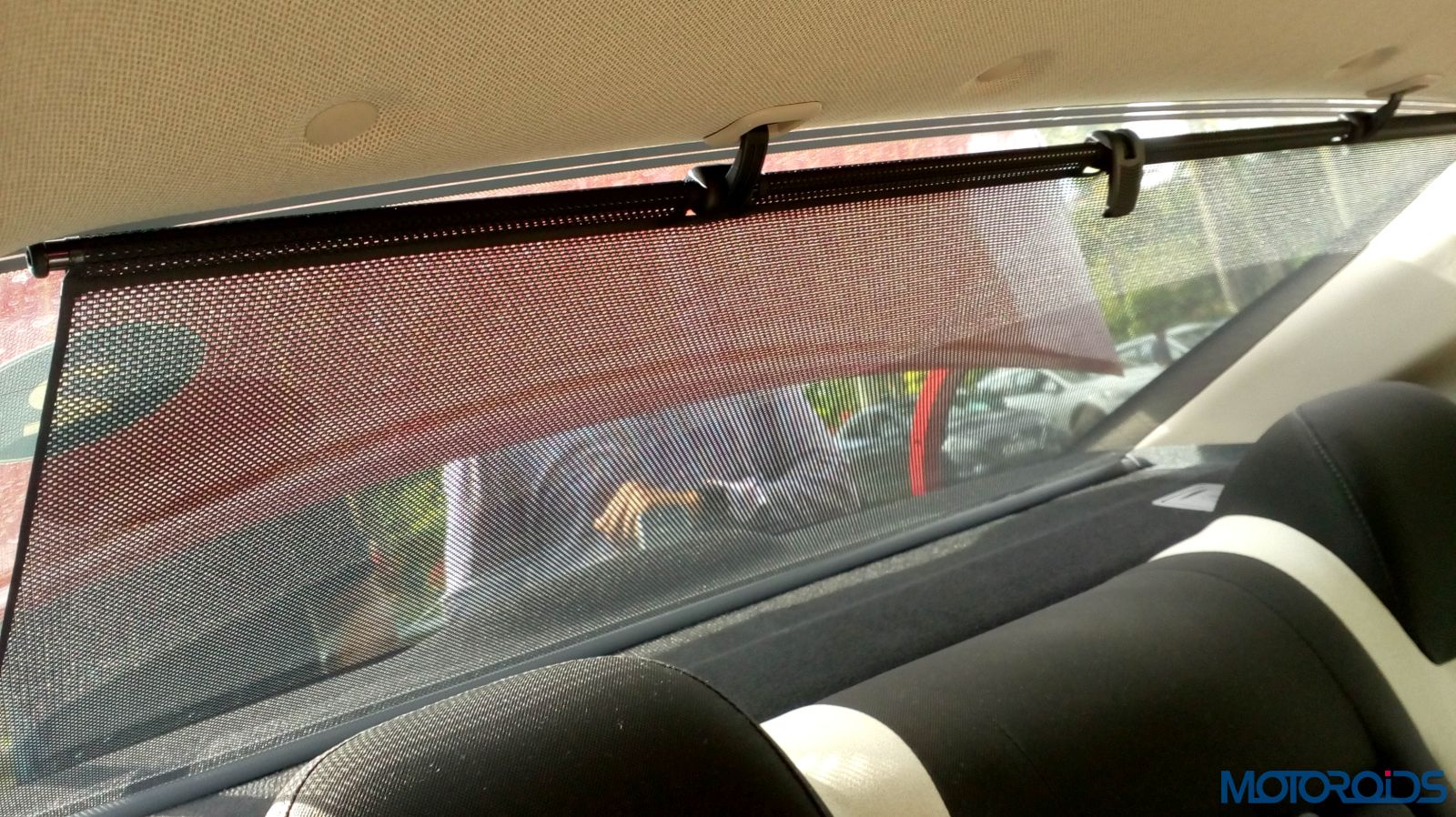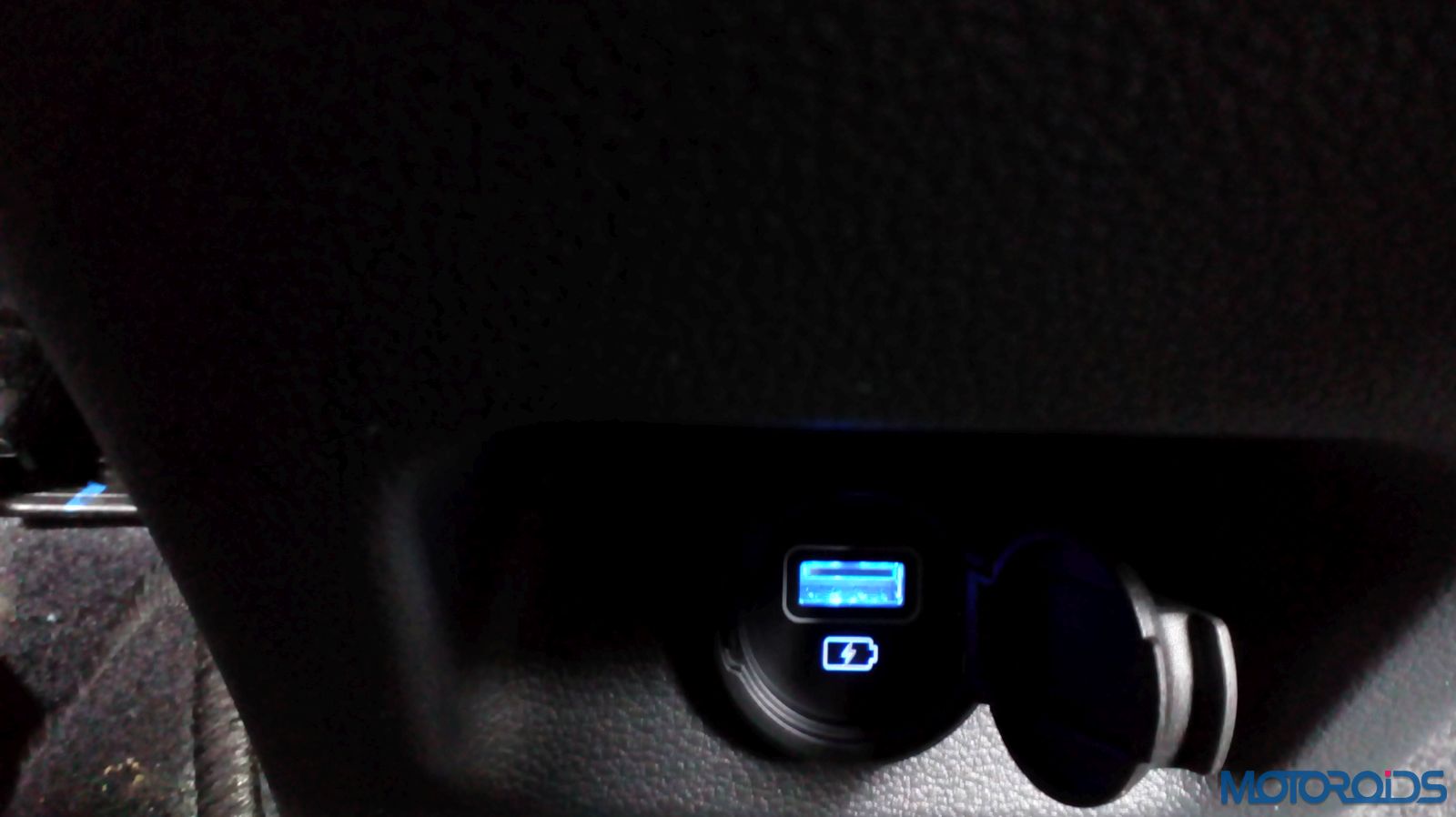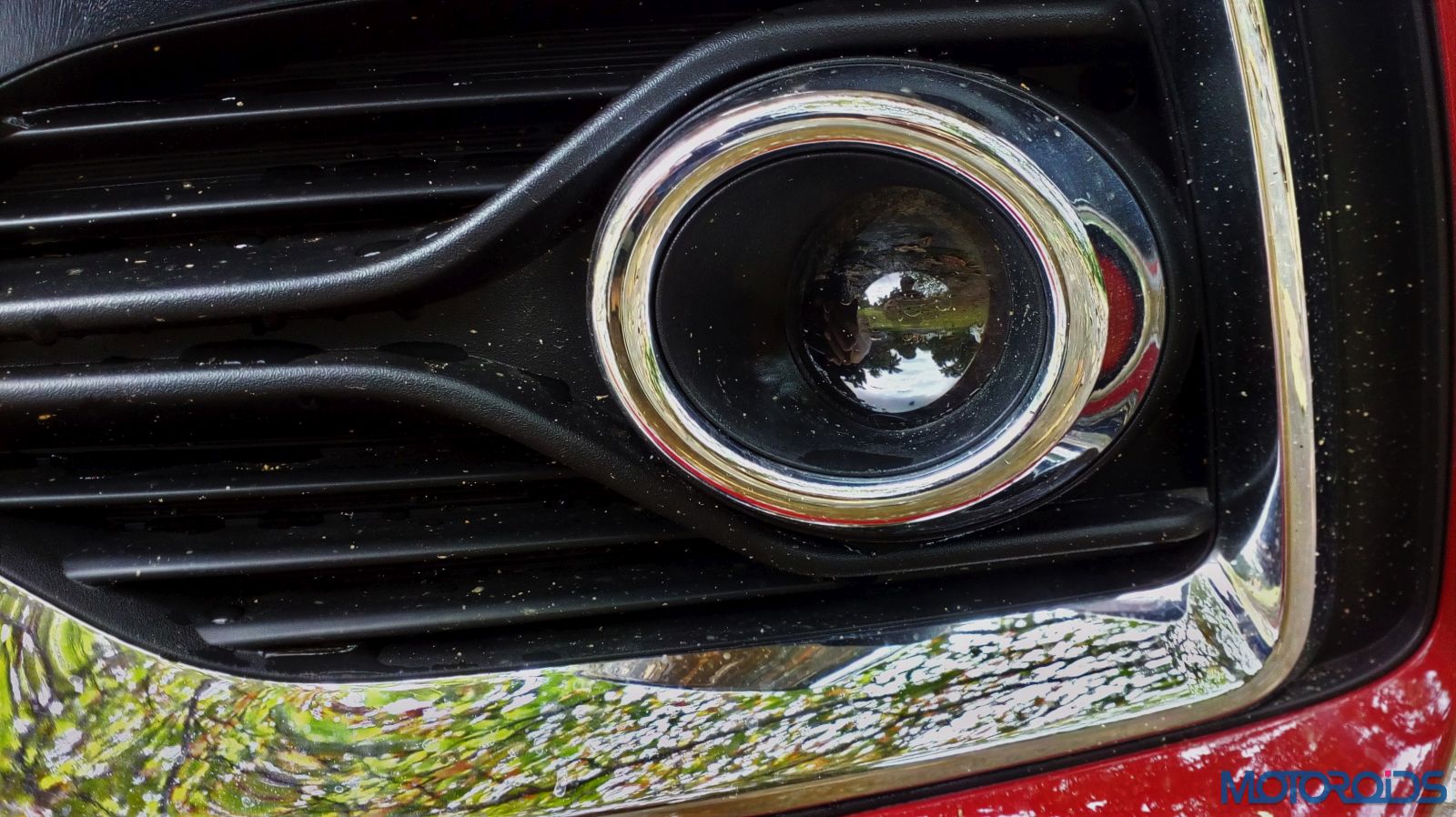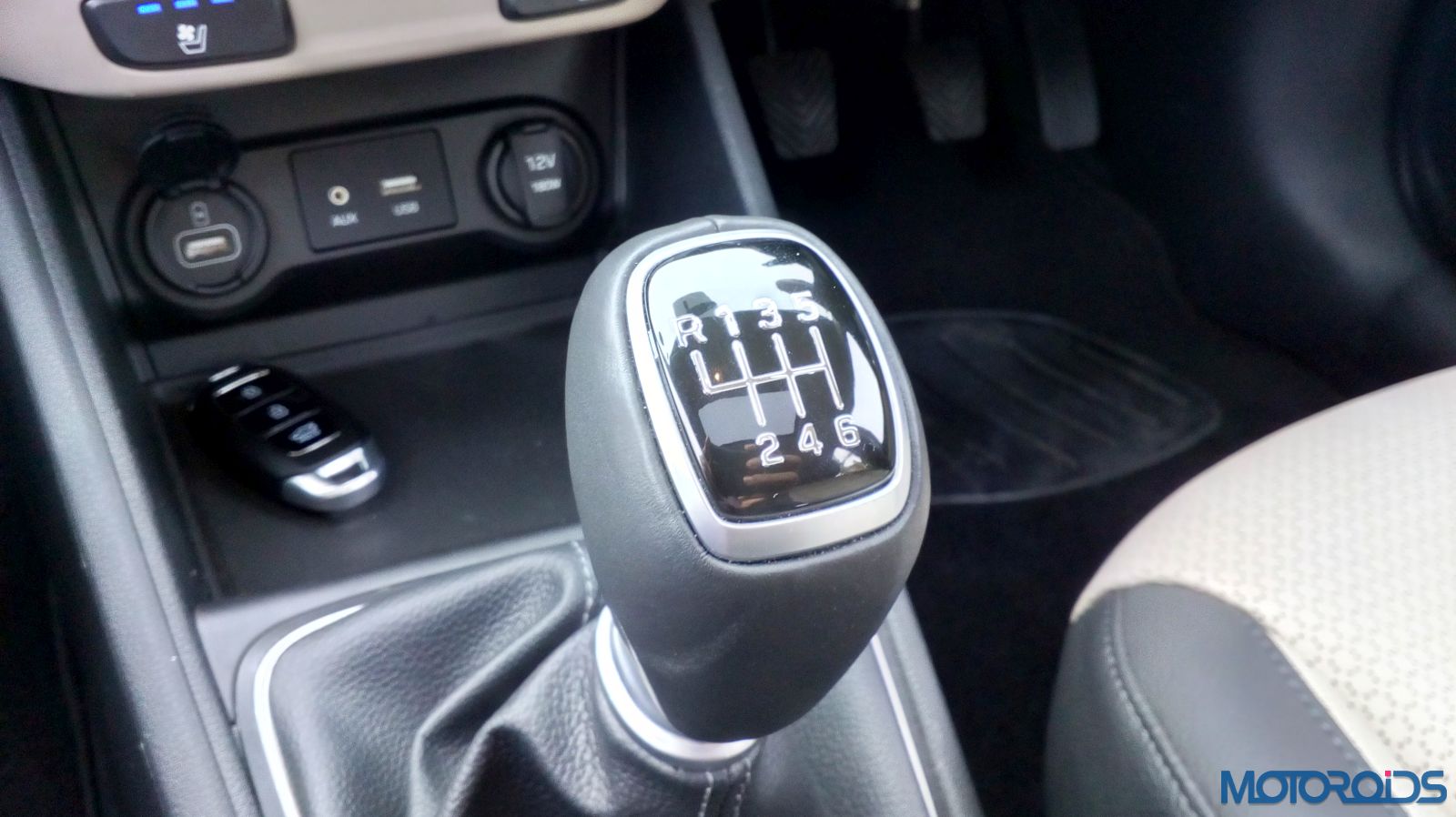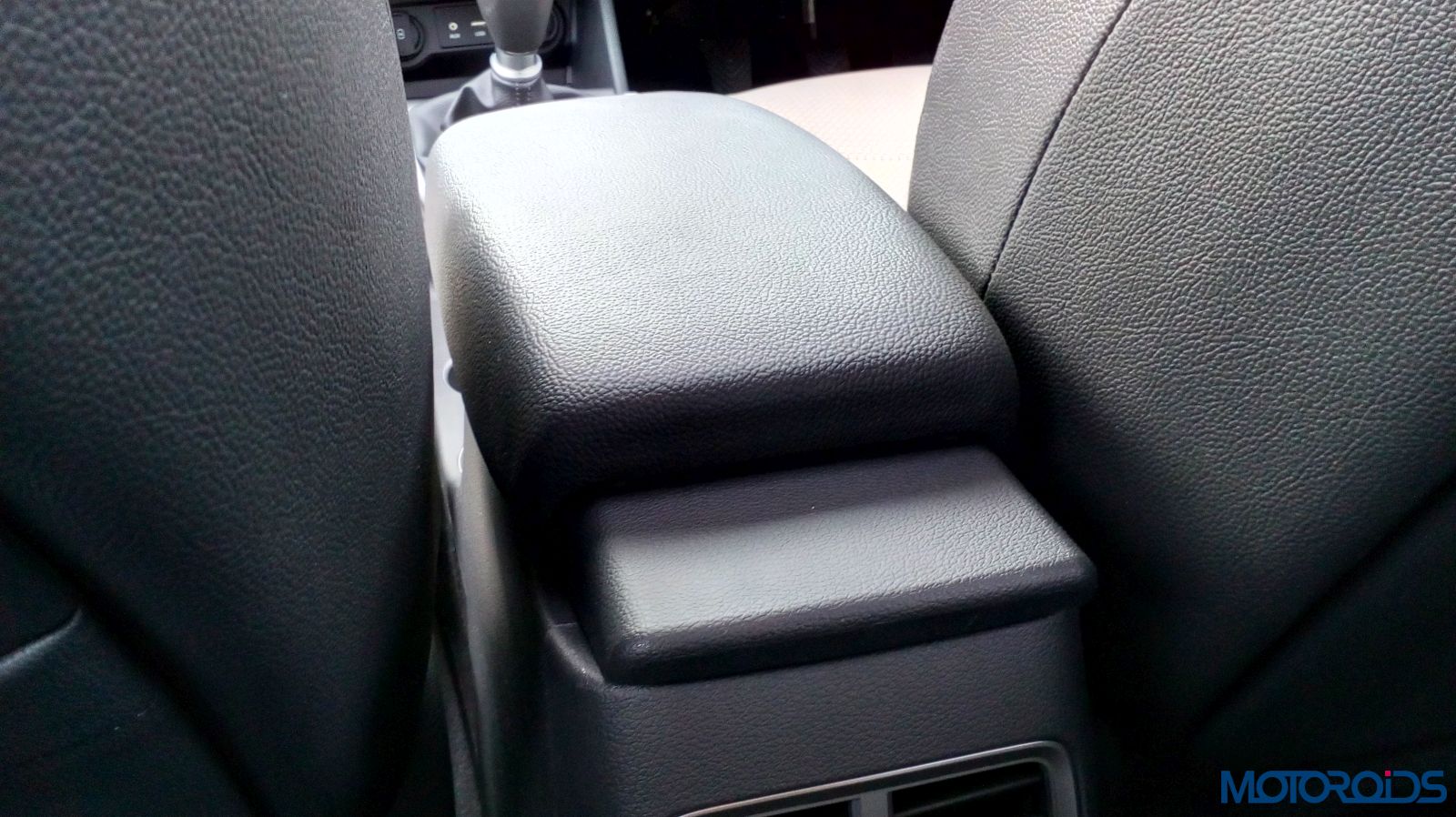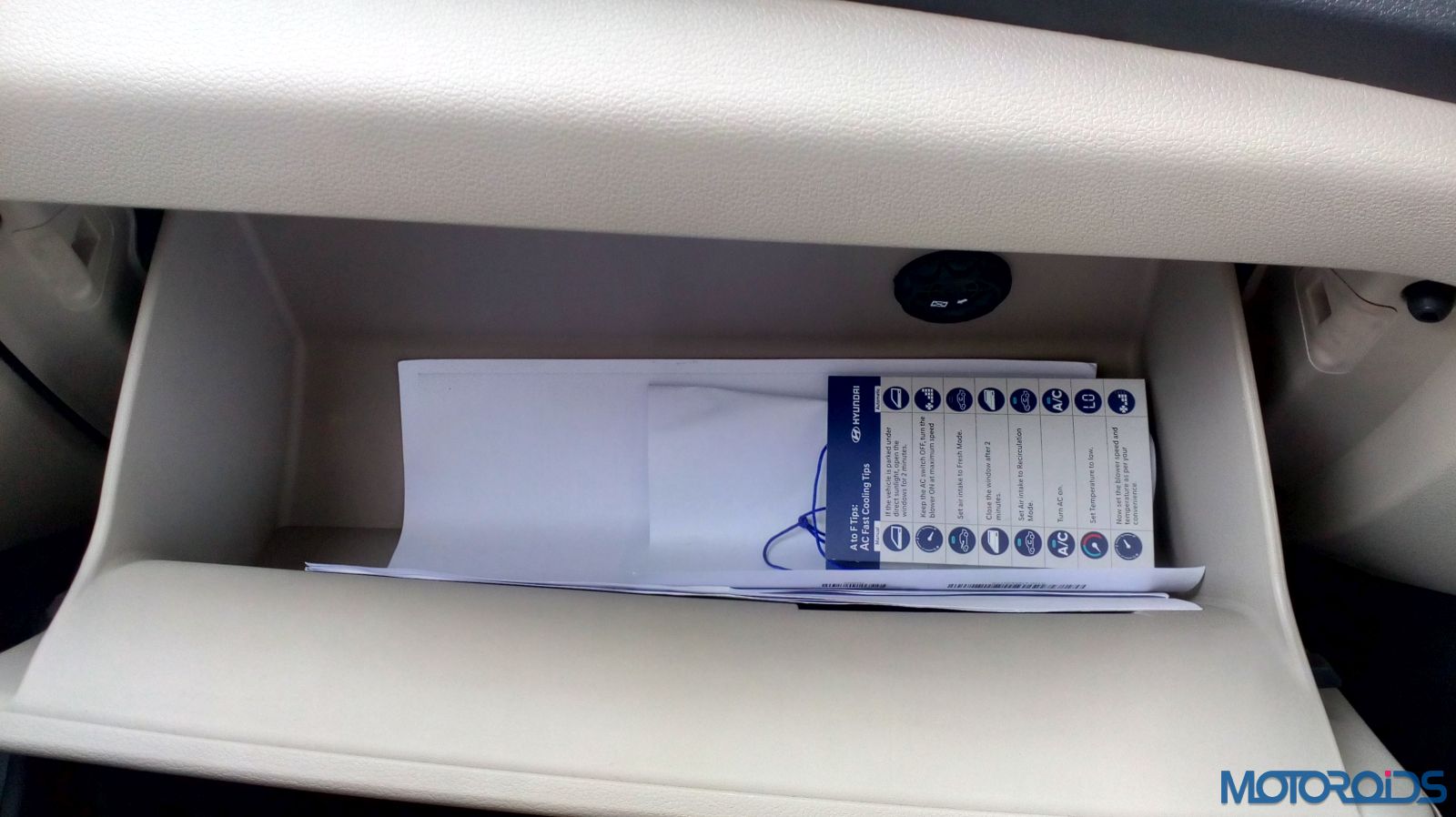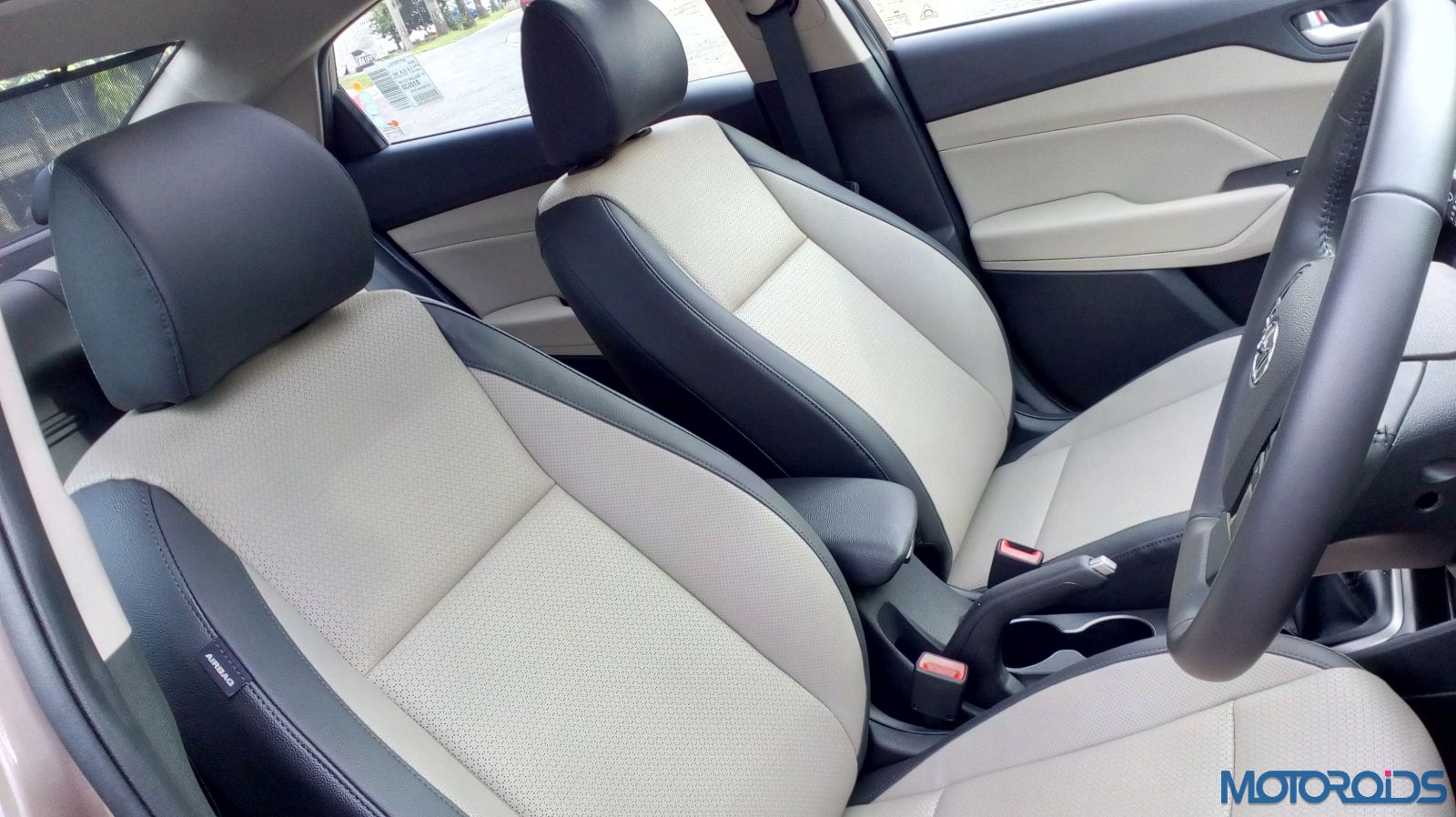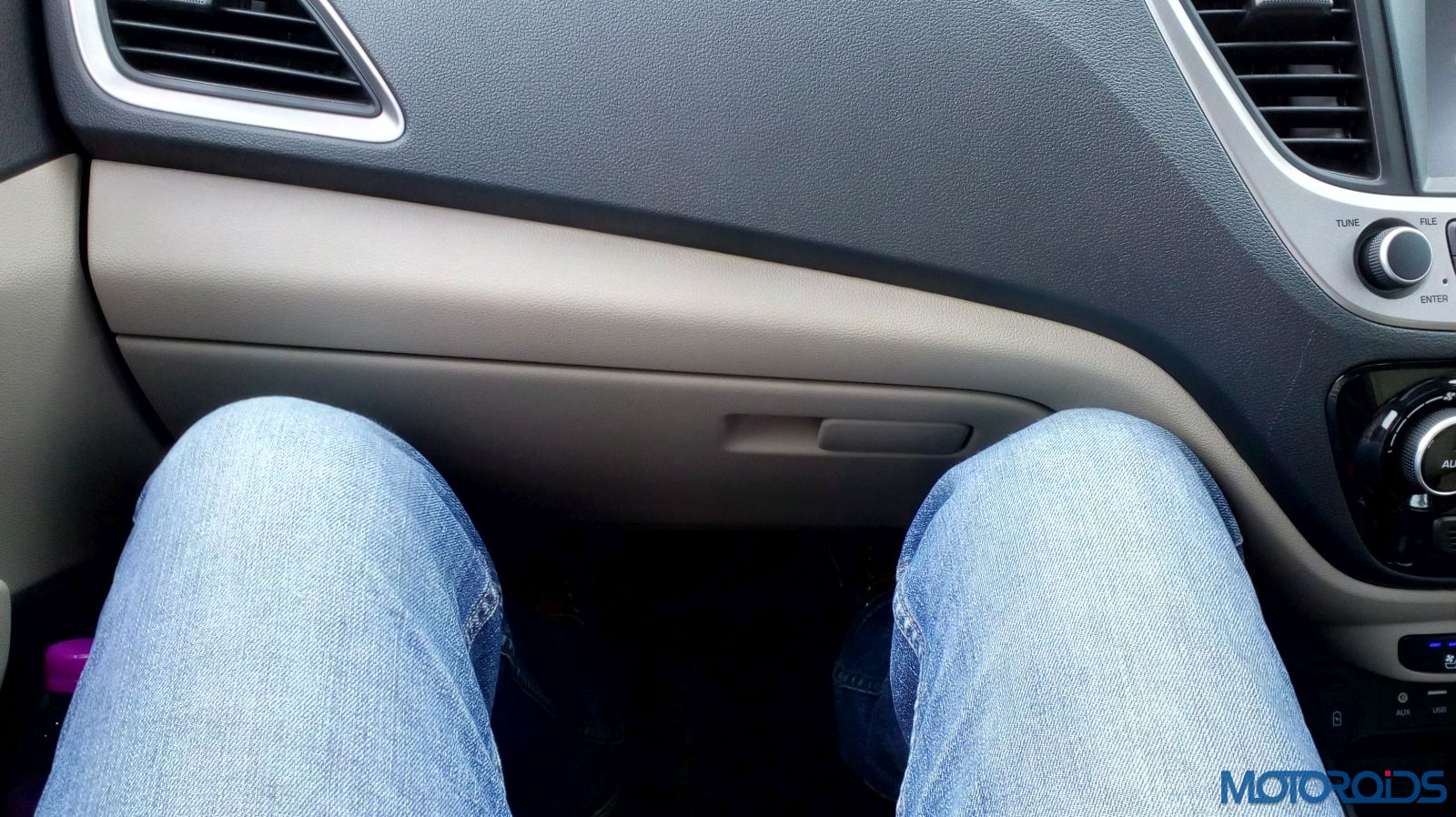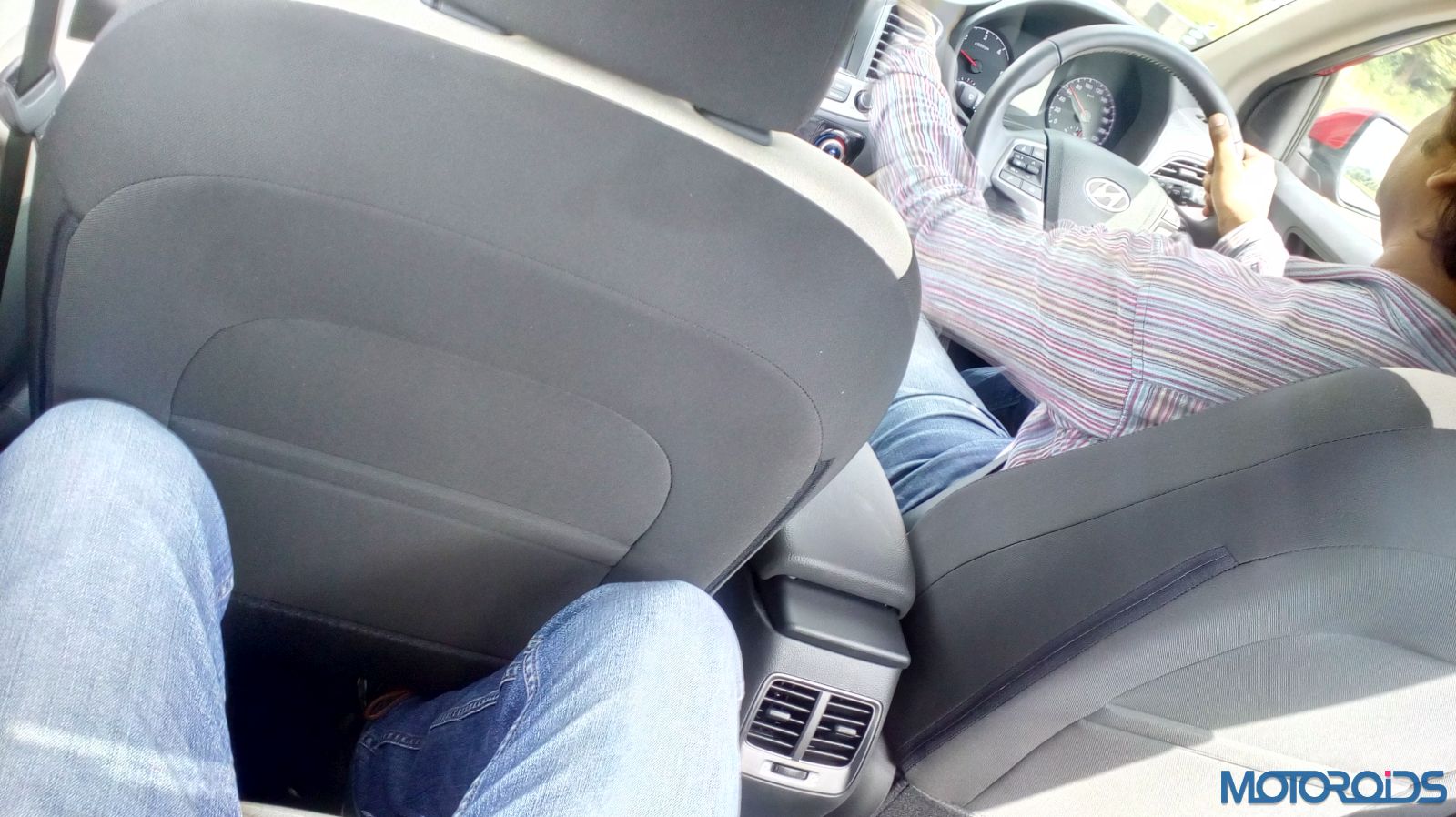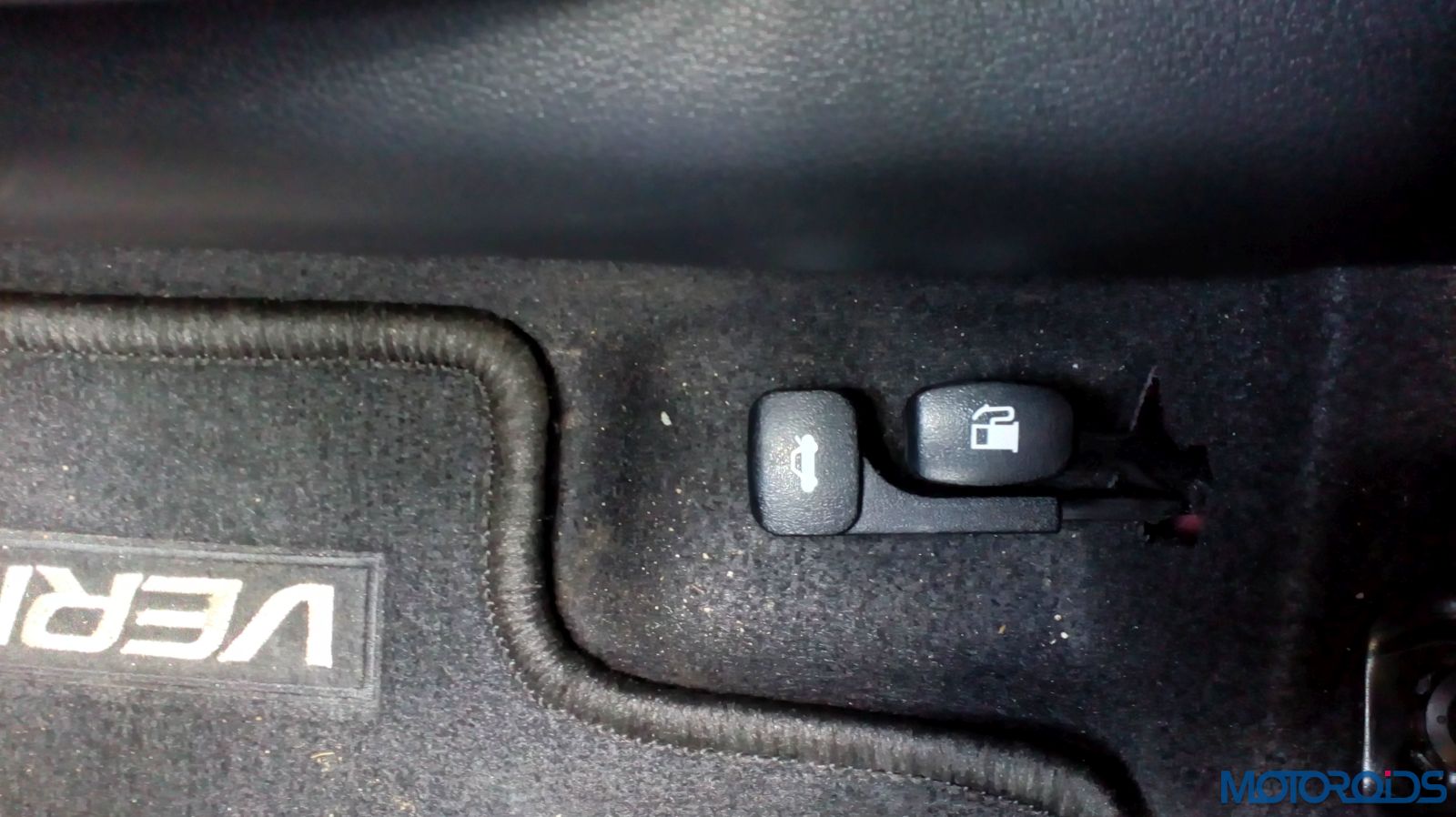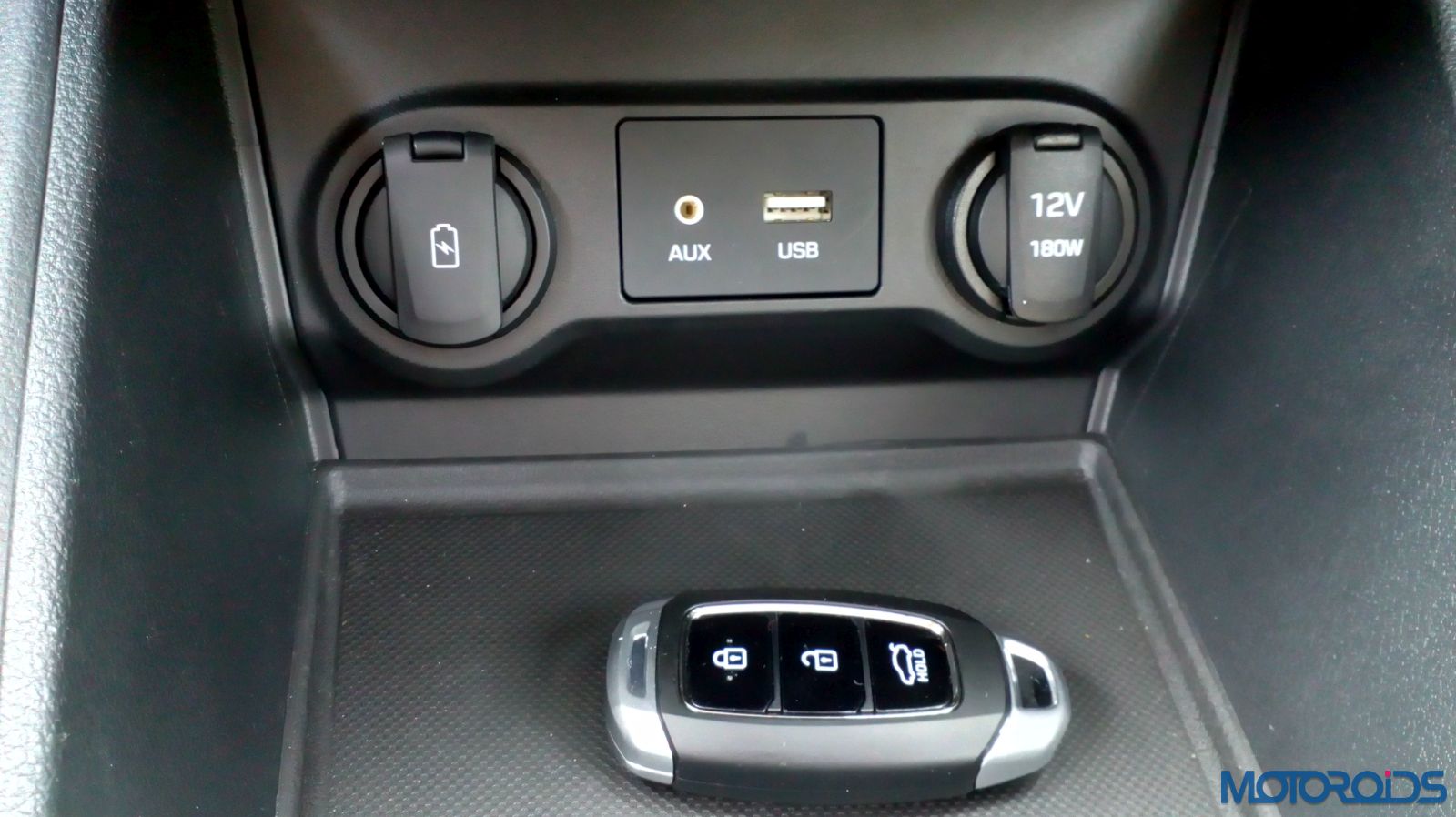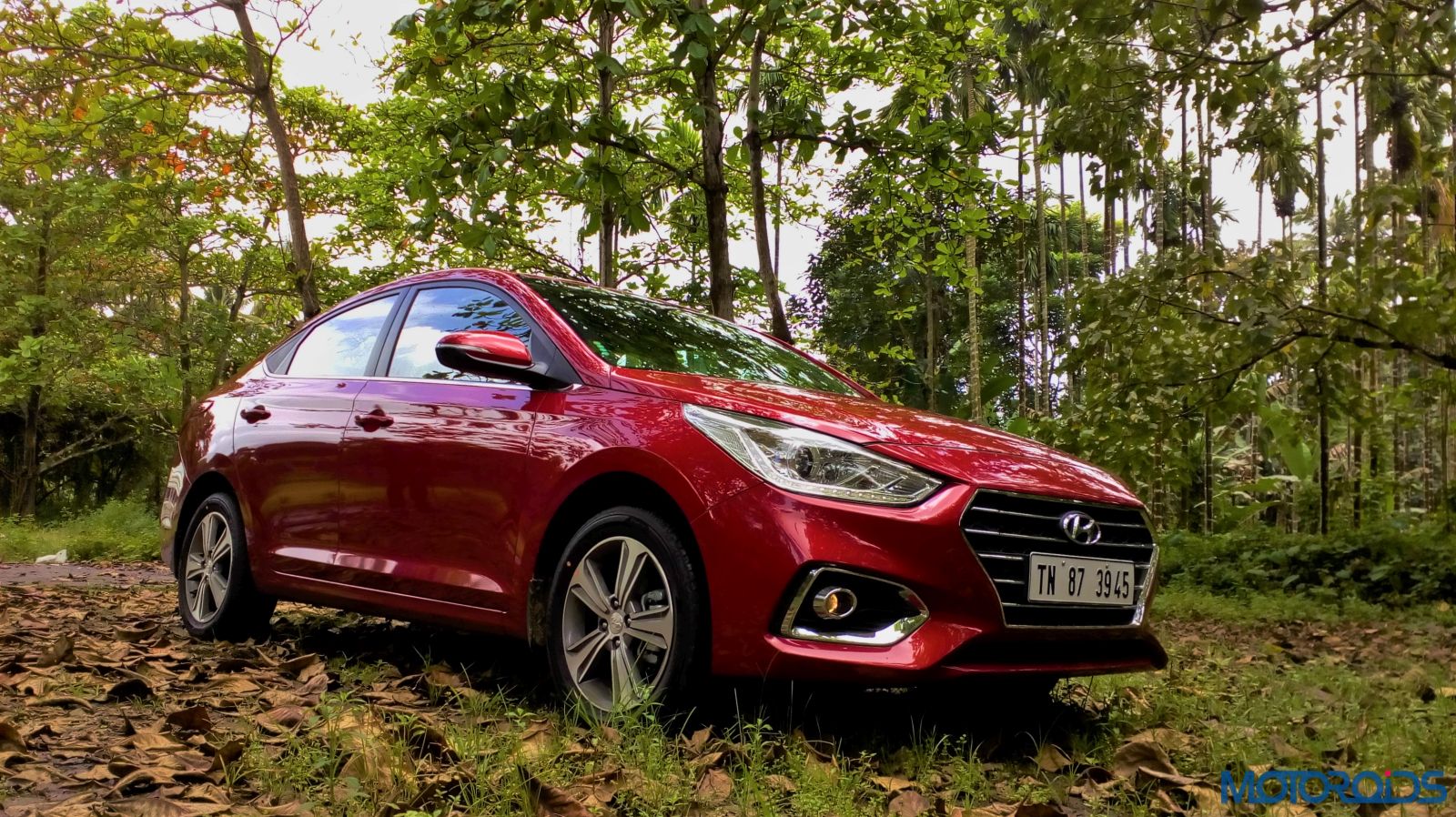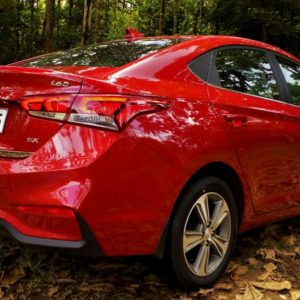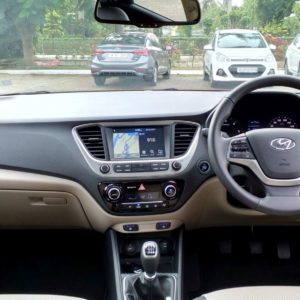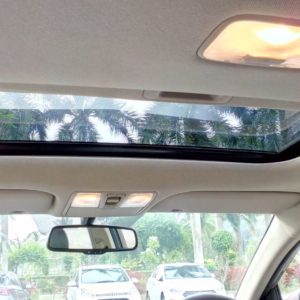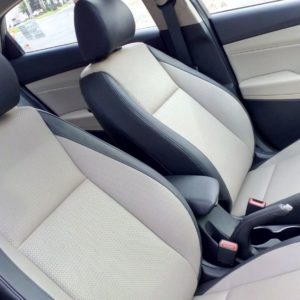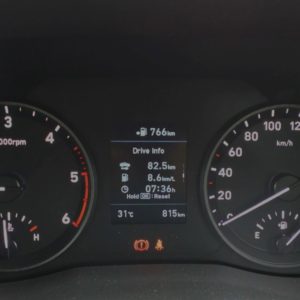Compact SUVs and premium hatchbacks have been taking it away from sedans, cutting into their long standing popularity big time. After a couple years of inactivity, however, three boxes have been hitting it back and the next-gen Hyundai Verna is a proper attack which will want to sully stilettos and put a lock on those tailgates. So we went through everything that is being boasted about on paper and then took the car out in the real world to figure out if the next gen Verna has filled out some of those cavities which existed between its many shiny features.
Hyundai Verna Engine And Performance
Paired to a 6-speed torque converter, the 1.6 litre U2, Crdi, diesel engine on the Verna cranks out 128 PS @ 4,000 rpm and 260 Nm between 1,500 – 3,000 rpm. Hyundai has perked up initial torque, where only 180 NM was available at 1,250 rpm in the older model, the new one makes 250 NM at the same engine speed, which results in the initial experience being almost lag free.
The engine sounds pretty refined and muted for a diesel at idling speeds, making its presence felt once you get moving. May we add, it certainly is the most refined motor in its class, but only as long as you don’t make it work harder and expect it to breathe fire through its nostrils. Because then, as it happened with the older car too, it seems that the engine is working really hard, but all that hard work doesn’t translate very well into actual momentum.
As long as the inputs on the accelerator are moderate and light, the going is smooth and refined. But if you have to overtake a slow moving vehicle on a single carriageway, for example, one tends to push the pedal deeper and the engine spins in its coarse territory between 2,700 – 4,000 rpm, having to wait for too long until its hook traps a higher gear. The 6-speed torque converter isn’t agile with its upshifts and fails to harness the ample spread of torque efficiently. As a result, when one tries to make brisk progress, it makes the engine spin at high speeds while holding lower gears for too long. There’s a manual mode too but it won’t let you upshift until you’ve reached a specified speed.
Having said that, the CRDI motor revs till its 4,250 rpm redline pretty briskly. Going by the very short experience we had with the diesel manual and its smooth as honey gearshifts, it should be the natural choice if you aren’t buying the Verna for practical reasons alone and having some fun will also be the order of the day. However, if your sedan has to be practical, will be driven at moderate speeds mostly, and it has to be the new Hyundai Verna, the automatic should do it for you. During our drive, the onboard computer displayed an efficiency figure of 11.5 kpl, which should go up by another 2-3 kms when the car’s driven more sensibly.
Hyundai Verna Ride And Handling
The change is almost like night and day if you compare it with the older car. What works in favour of this new sedan is the adoption of an all-new K2 platform which also underpins the Elantra. Benchmarked against the City and the Ciaz while it was being tested extensively in the country, Hyundai has spent more than INR 1,040 crore to develop the 5th gen Verna and all of that shows in the way this sedan moves now. It now feels more European in the way it drives and while most of the shortcomings on the older gen car have been ironed out, a few things still don’t feel natural.
The steering for example. It has been injected with a lot of artificial weight which makes it heavy to turn around even at parking speeds, and this is in contrast to most EPS systems which build that heft in a progressive manner as momentum begins to rise. It isn’t one of those agile systems either and doesn’t pair with the adept new chassis as a natural ally, as we found out while throwing the car around bends. It does place the car where you intend to though, comes to its natural position by itself when you turn the nose in the opposite direction and wrapped in leather, feels nice to hold.
Talking about the new shell and suspension combination, the new car comes across as a pleasant surprise if you’ve driven the older gen Verna. Straight line stability is positive and so is the composure around corners. There is a slight amount of roll which sets in if you decide to attack corners, but the car anchors to its line and goes around a bend like it’s locked down. Given the smooth roads we encountered all throughout, the seemingly firm suspension setup did thud through some sharp undulations which were few and far in between. But the good news is that the infamous vertical movement inside the cabin is now almost negligible.
This can be attributed to the fact that the rear dampers are mounted in a more vertical position now and benefit from hydraulic rebound. Changes have been made on the mountings to reduce suspension noise, while the front wheel’s forward displacement has been reduced to negate any rearward movement when it encounters bumps and ruts. For the couple hours that I spent in the backseat, I did manage to take a nap and that speaks in the favour of the new next-gen Verna’s ride quality. Although we’ll reserve our opinion on how the taut setup behaves on not so great surfaces for another day. Coming to the brakes, Hyundai did tell us that the ABS software has been optimized for better grip levels while booster size has been increased for 9″ to 10 “, which together results in linear braking performance and reduced initial jerks. However, this has made the pedal to be devoid of any feedback and we feel the system could do with some more bite to make the driver feel more confident.
For the fifth-gen Verna, Hyundai has gone to the extent of insulating the centre tunnel, changing the engine mountings, and filling pillar cavities with foam to achieve best-in-class levels of NVH. And they have succeeded in achieving that as the only thing you can hear inside the solidly put together cabin is that diesel motor and its mild rattles and hums unless you push that thing for performance when things do get audible. Road noise, outside rubbish, and everything else remains outside the cabin.
Hyundai Verna Interiors And Features
The cabin inside the new Verna is typically Hyundai. Finished in a two tone shade of black and beige, everything reeks of quality and touch points have a robust feel about them. Here’s the bummer though. The Automatic variant (SX trim) skimps on a start/stop button, doesn’t get those cooled and ventilated front seats but makes up for the absence of those luxuries with an electronic sunroof. Those features are reserved for the top-of-the-line SX(O) trim of the diesel powered Verna, which is only available with a 6-speed manual for now.
We spent some time inside the manual variant to ascertain the effectiveness of the ventilation system, where two individual buttons on the centre console allow selection between three levels of intensity. At the highest setting, the effect is most prominently felt around the groin area, but we’re sure it will keep your backs sweat free and rosy when you have to be seated there for longer durations during peak summer. Both front chairs are wide enough and offer great levels of all round support.
The centre console has been tilted towards the driver where a silver finished dial houses the 7″ touchscreen for infotainment, flanked by two vertical AC vents. The IPS panel doesn’t wash away in sunlight and gets integrated navigation which can be viewed in a split screen setup along with audio information. Touch sensitivity is better than good and so are levels of contrast and clarity. Moreover, there are buttons and dials which help a great deal to operate the system in addition to switches on the wheel. The screen also doubles up as a display for the reversing camera where guidelines and parking sensors ease your life further. The system is CarPlay and Android Auto compatible, which should delight geeks and all those who want their cars to be loaded with the latest.
Enhanced by Arkamis, the sound system reproduces a bass filled melody where the quality refuses to degrade even at the highest volume level. Set the equalizer to its neutral settings and the quality is still impressive. Although in addition to four presets, you may choose to fiddle with the 3-band equalizer to find the ideal setup for your kind of music. Bluetooth pairing is seamless, although, like most modern setups, the car has to be stationary while you do that.
Air-conditioning is effective, quiet at usual fan speeds, works wonderfully well, and the control panel gets its own individual display rather than using the central screen to relay information. The cooling system boasts of a ‘Clean Air’ feature, where the evaporator’s core has been treated with an eco solution which prevents the formation of bad bacteria as the car gets older. It helps negate bad odour which gets carried by air that is blown into the evaporator before entering the cabin. Rear passengers get two individual AC vents and a single dial to control volume.
There’s ample storage in the door pockets for even bigger bottles to rest there comfortably. Two vertical cup holders rest beside the handbrake and the driver side armrest slides for adjustability, also acting as a lid for storage space underneath. A decent sized glove box is cooled but gets no illumination, neither does the vanity mirror under the passenger side visor.
Although the sunglass holder near the front cabin lights gets felt lining to save your eyewear from scratches. The sliding cover for the sunroof is manual but the glass slides electronically and does help in adding cheer to the cabin when things are gloomy on the outside.
The instrument cluster gets these ordinary looking dials but thankfully retains analogue readings for fuel levels and temperature. A crisp display that sits in between provides all the information you need, and thankfully, ditches those cheap stick type switches for a toggle button that is conveniently placed on the steering wheel.
The wheel itself feels great in your palms and hits the nail with its size, but is only adjustable for height.
What’s it like in the back?
Prepare to be disappointed if the high-quality cabin and features inside the Verna have already made you tie your shoe laces. We spent more than three hours in the backseat of the next-gen Verna and although the rear bench on its own is really comfortable, space is an issue. While the amount of headroom isn’t that big a problem, if you’re anywhere near 6 feet and there’s another person of your size in the front seat, your feet will have to slide under the front seat. If you bring them up, your knees will brush against the front backrest.
When a manufacturer highlights that the bottom area of the front backrest has been curved to allow your feet to slide and rest beneath comfortably. And that the backrest itself has recesses to release additional space for your knees, you know that they are talking about something which isn’t the car’s strongest points.
Coming back to the seats, the backrest has been reclined at a perfect angle, there’s an armrest with cupholders which slides down, under thigh support is great, and it is a pretty comfy place for shorter journeys and not so tall people. But if you are tall, you will be cramped for space if you have to spend long hours in the back seat. Also, adjustable headrests for the rear seat are reserved for the SX(O)trim, while everything else has to make do with the integrated type.
Boot space at 480-litres is great and can swallow quite a lot of luggage. But the loading lip is high and heavier items will have to be lifted to a certain height before you can slide them in. The new Verna gets Smart Trunk functionality which automatically unlocks and pops the boot open when the owner stands within 1 metre behind the vehicle with the smart key for more than 3 seconds.
Hyundai Verna Design And Styling
The next gen Hyundai Verna does look wider, more mature and grown up now. Thanks to that front cascading grille which sits low and makes it fit in with the new family design language. Then there are those upswept headlamps which have been graced with projectors and jewel like LED DRLs, fog lamps get projector treatment too, and prominent creases and details on the front bumper make the face strike a fine balance between aggression and class.
Moving to the sides, a simple crease along the shoulder line runs in a straight line and replaces the curve which rose from the front wheel arch in the older car. The pattern on those 5-spoke 16″ alloy wheels looks great too. Although it is not as glitzy as the design it replaces. Underlined with a thin strip of chrome, just the right amount of premium has been sprinkled near the window sills.
Where the next gen Hyundai Verna commands a second look is at the rear though, thanks to that smashing tail light pattern and the sporty C-pillar merging in a near Coupe like fashion at the very edge of the boot. A simple chrome strip at the bottom of the boot gate maintains class, while the bumper gets a two-tone treatment to break the monotony. As a whole, the Verna is definitely the freshest looking sedan among its competitors, where it looked like a scaled down Elantra to many.
Hyundai Verna Details And Features Explained Through Images
High-quality sunroof gets a manually operated sliding cover
That illumination pattern for the taillights looks striking after dark
MID toggle switch finally makes it to the wheel
The new Verna recognises your voice too
Stalks are chunky and operate with smoothness
You don’t get that with the Diesel Automatic
All that rests neatly within that padded spare wheel cover
5-spoke diamond cut wheels are wrapped in Hankook Rubber
Sun Curtain is a nice feature to have. But only the SX (O) trim gets adjustable headrests
Rear passengers get a single USB charging point
Fog lamps get projector illumination
The manual gearbox on the diesel is easily one of the smoothest
Driver side armrest can slide back and forth
Average sized glove box isn’t illuminated
Front chairs offer great all-round support
Those are my legs in the front seat
For the same pair to rest like that when in the back
Old school mechanism for boot and fuel cap release
Front passengers get USB + 180W charging sockets
Hyundai Verna Buying Advice
The next gen Hyundai Verna is loaded with features, drives significantly better than the outgoing car and is propelled by the most refined diesel engine when compared to its immediate Japanese competitors. Although the 6-speed automatic transmission has a lot to catch up if it has to rival machinery which comes out of Europe. But when 80% of the sales in this segment are hogged by Honda and Maruti alone, of which Hyundai is targeting a 35% share, the Verna knows what it is up against.
Except for rear seat space, it is right up there with the competition in every other aspect and going by the number of bookings Hyundai has garnered already, they sure have an obvious winner in the new Verna. However, here’s a little advice. If you enjoy driving, your next sedan has to be a diesel, and your heart’s set on the new Verna, consider the manual. For all other reasons which tilt towards practicality, convenience, and unhurried comfort, do consider the automatic.
Hyundai Verna Price
Petrol
- 1.6 Petrol E Manual INR 7.99 lakh
- 1.6 Petrol EX Manual INR 9.06 lakh
- 1.6 Petrol EX Automatic INR 10.22 lakh
- 1.6 Petrol SX Manual INR 9.49 lakh
- 1.6 Petrol SX(O) Manual INR 11.08 lakh
- 1.6 Petrol SX(O) Automatic INR 12.23 lakh
Diesel
- 1.6 Diesel E Manual INR 9.19 lakh
- 1.6 Diesel EX Manual INR 9.99 lakh
- 1.6 Diesel EX Automatic INR 11.39 lakh
- 1.6 Diesel SX Manual INR 11.11 lakh
- 1.6 Diesel SX+ Automatic INR 12.61 lakh
- 1.6 Diesel SX(O) Manual INR 12.39 lakh
Hyundai Verna Technical Specifications
2017 Hyundai Verna Petrol
- Fuel Type: Petrol
- Max Power: 121 bhp @ 6400 RPM
- Max Torque: 151 Nm @ 4850 RPM
- Mileage (ARAI): 17.40 kmpl
- Transmission Type: Manual/Automatic
- No of gears: 6 Gears
- Drivetrain: Front Wheel Drive
2017 Hyundai Verna Diesel
- Displacement: 1497cc
- Fuel Type: Diesel
- Max Power: 126 bhp @ 4000 RPM
- Max Torque: 260 Nm @ 1500 RPM
- Mileage (ARAI): 24.80 kmpl
- Transmission Type: Manual/Automatic
- No of gears: 6 Gears
- Drivetrain: Front Wheel Drive

